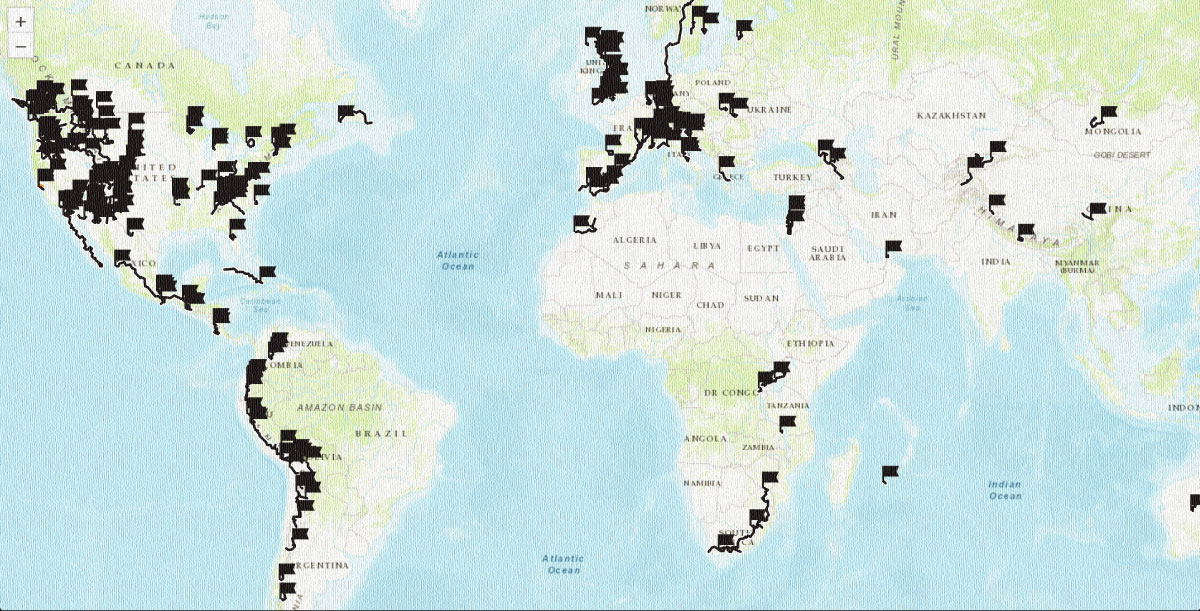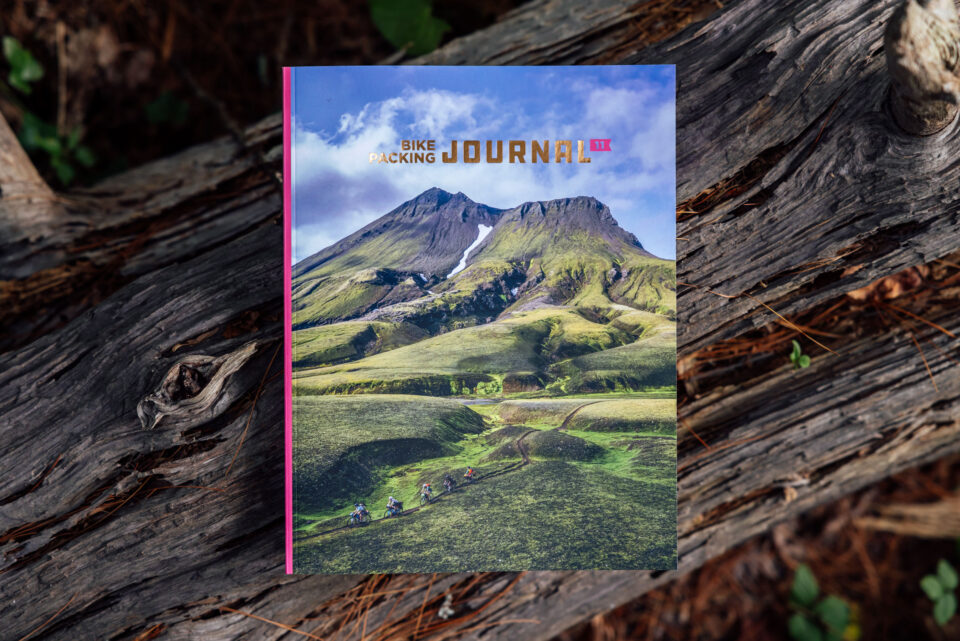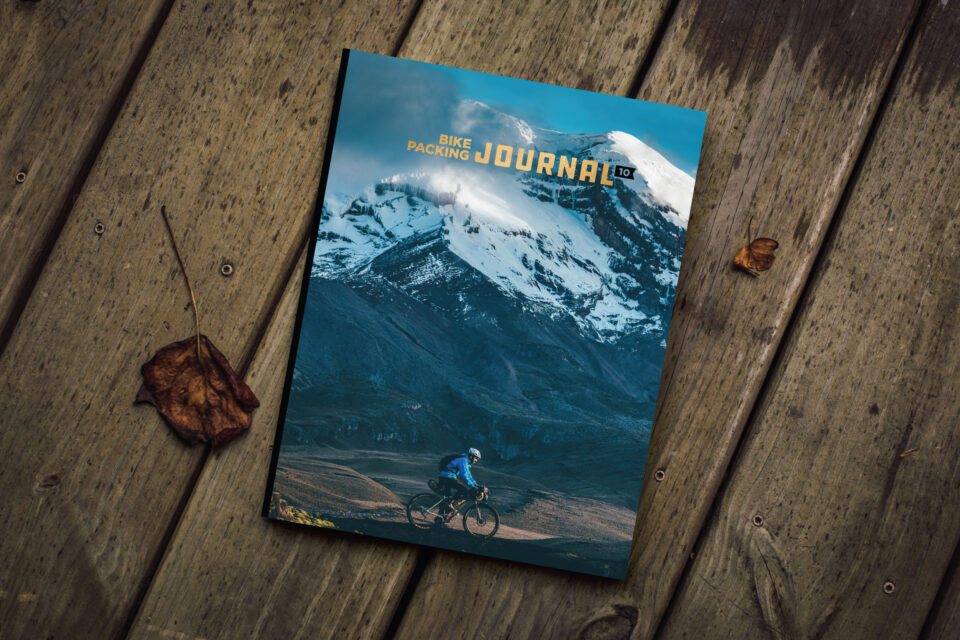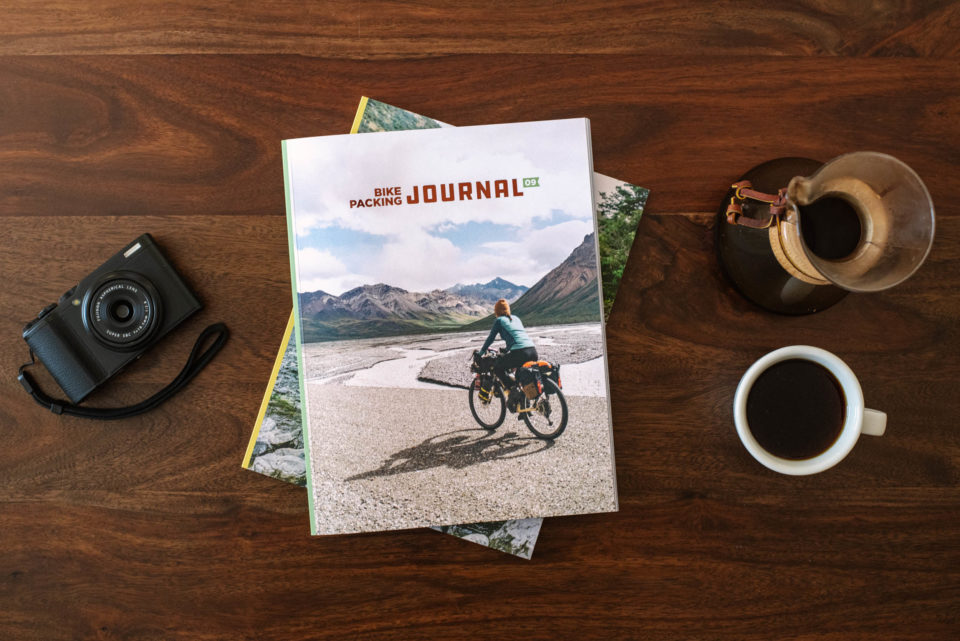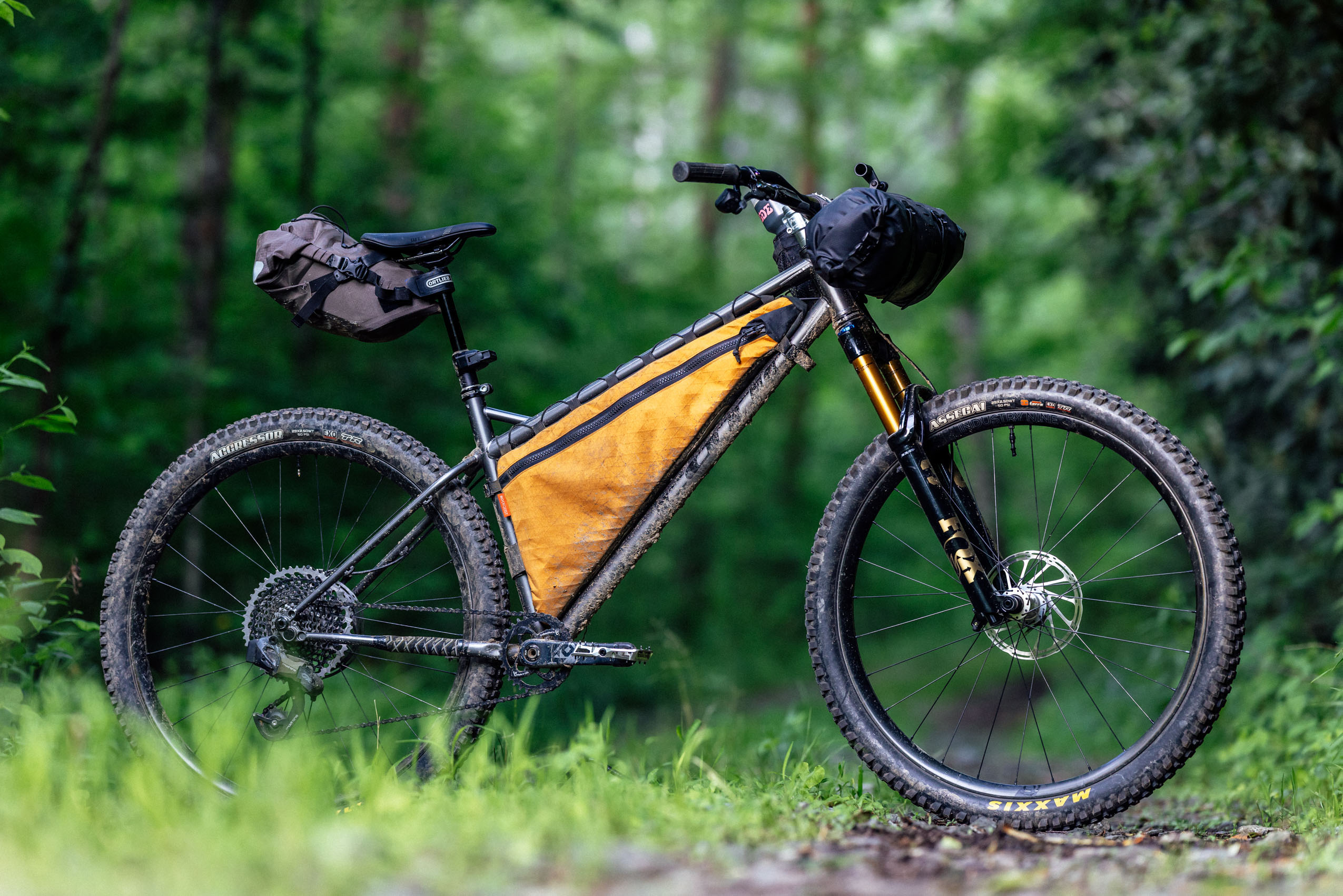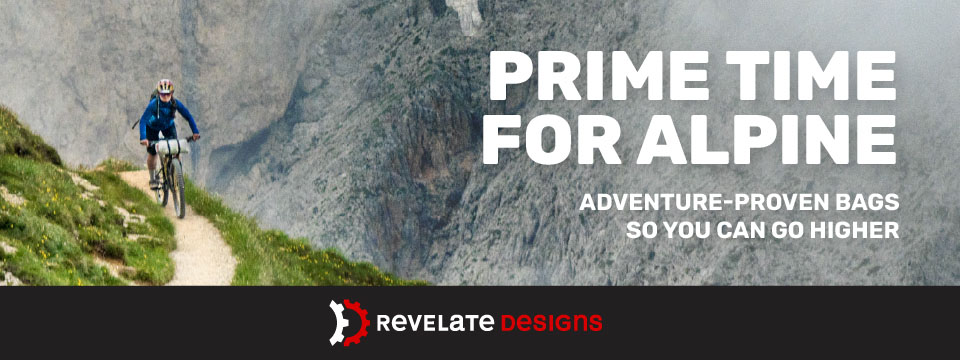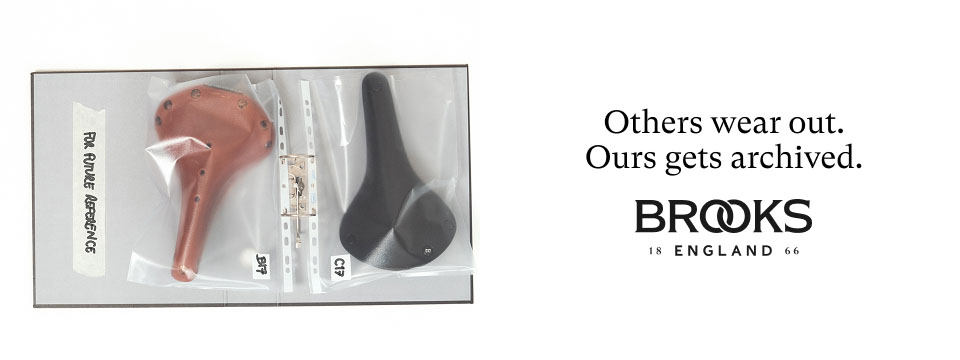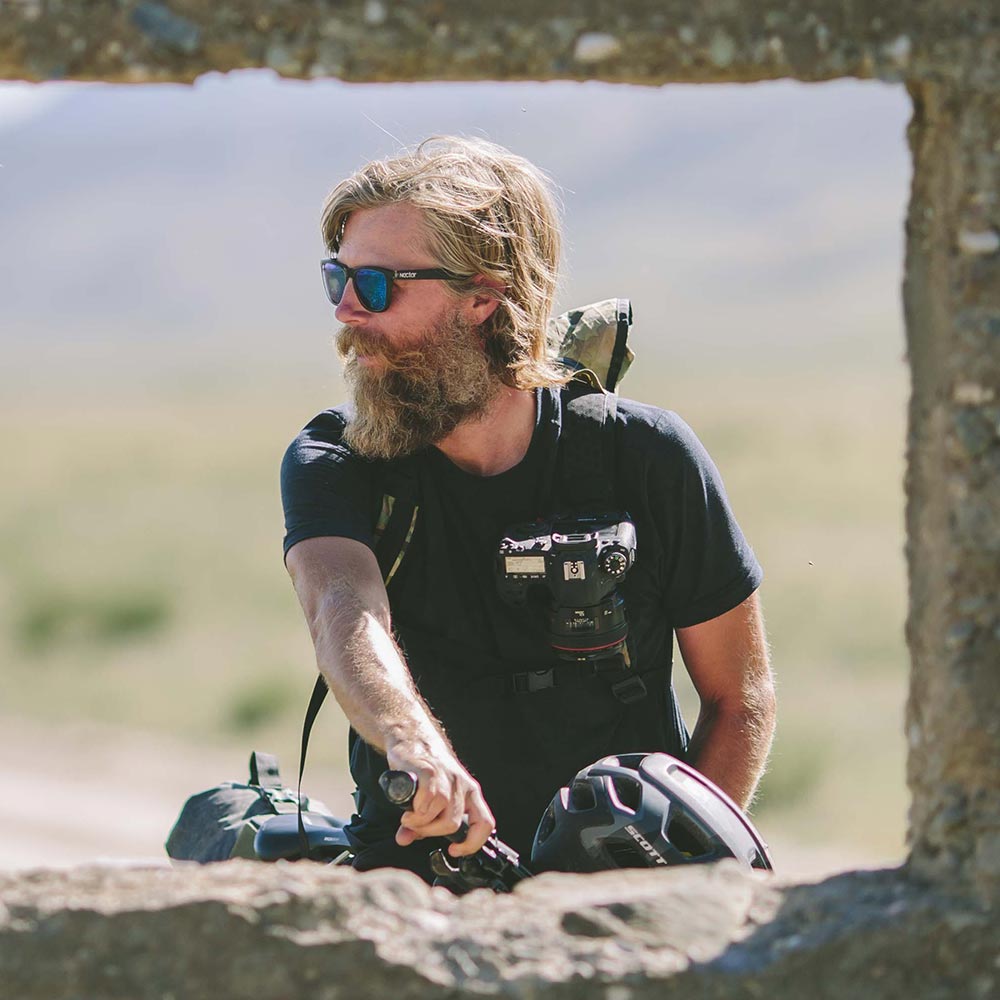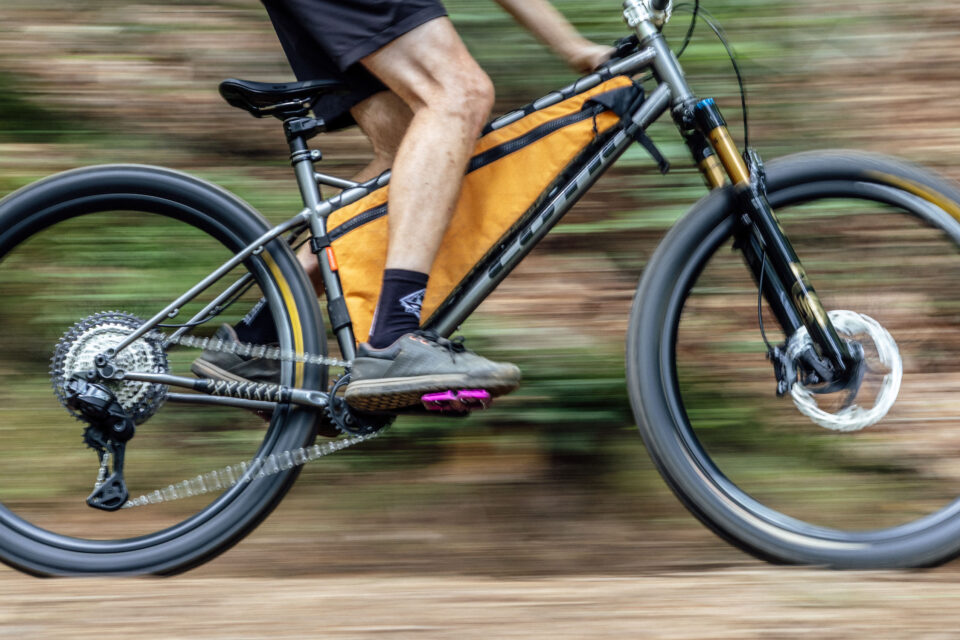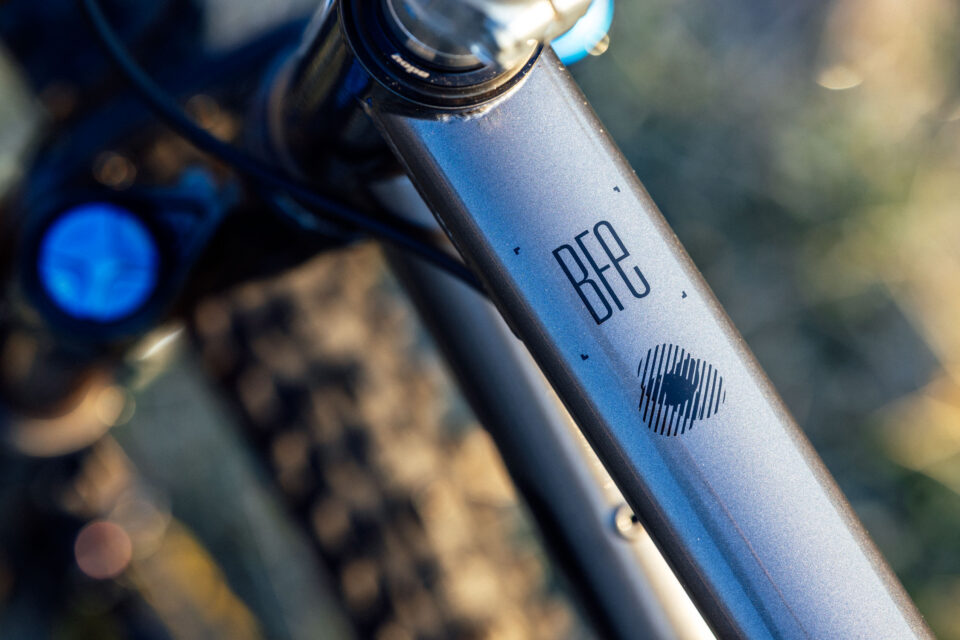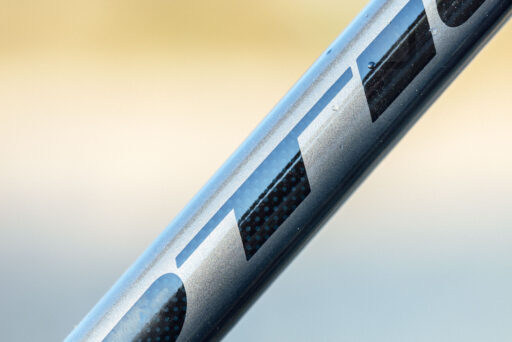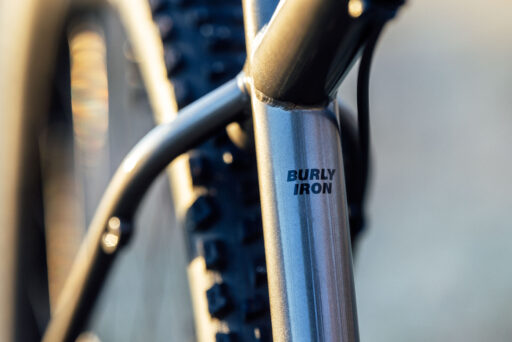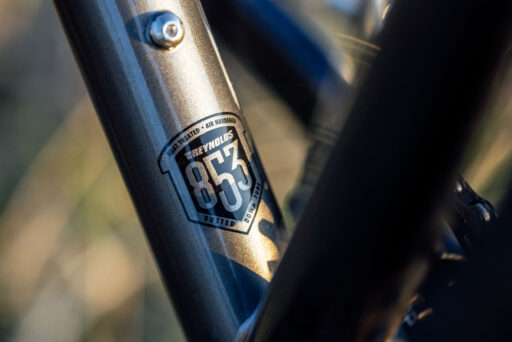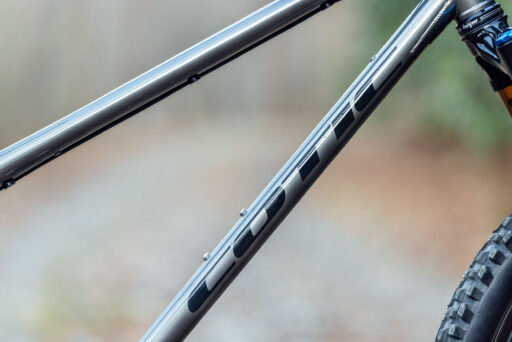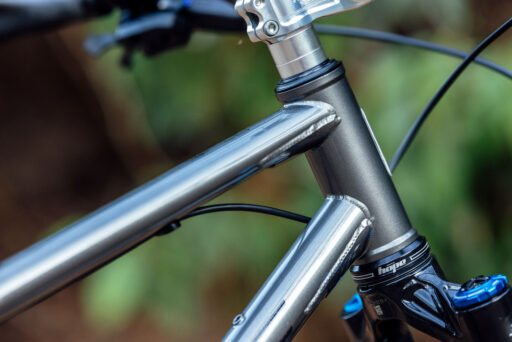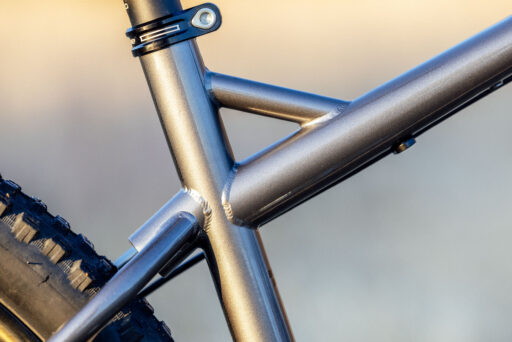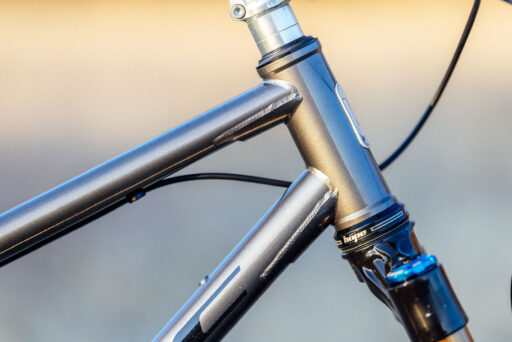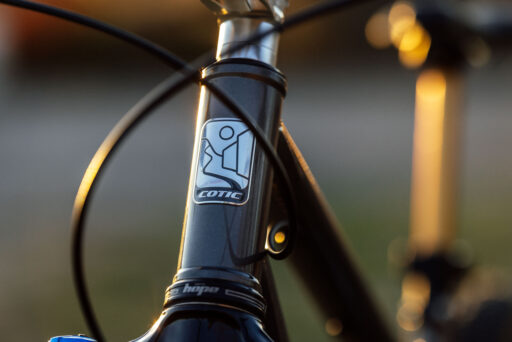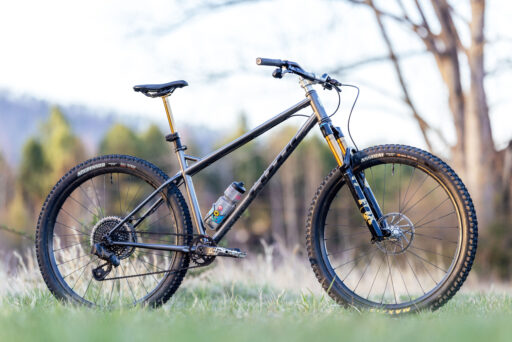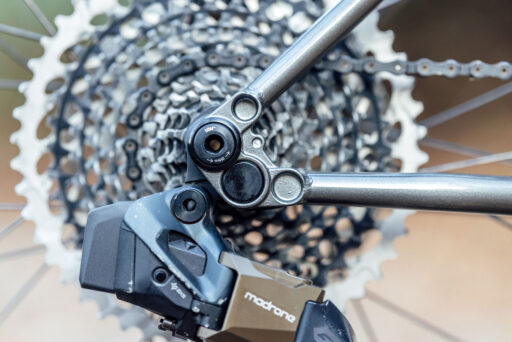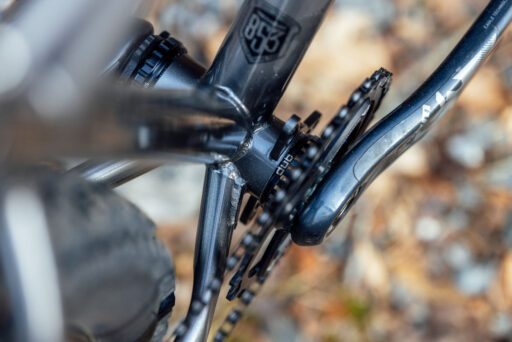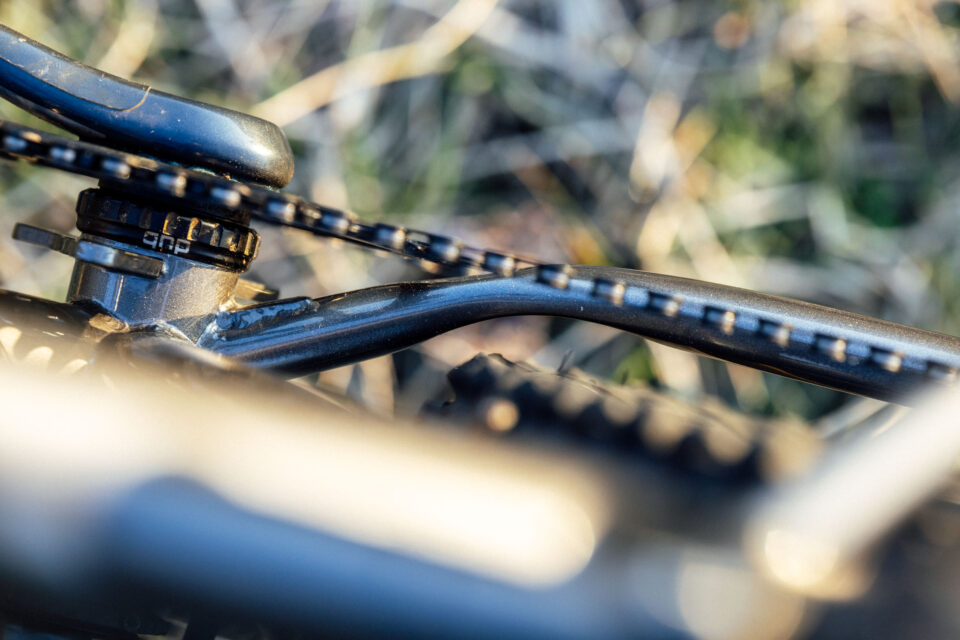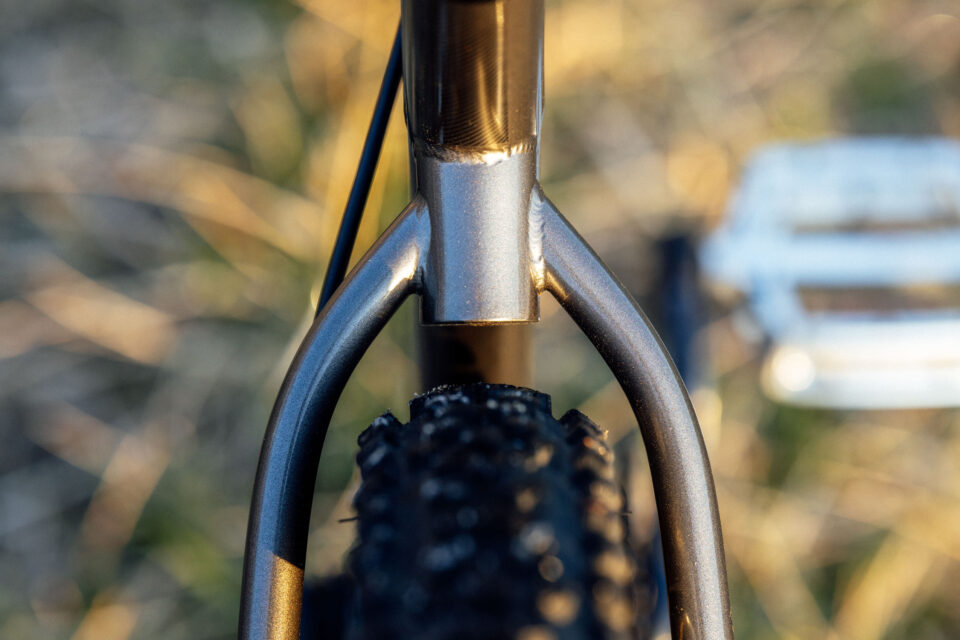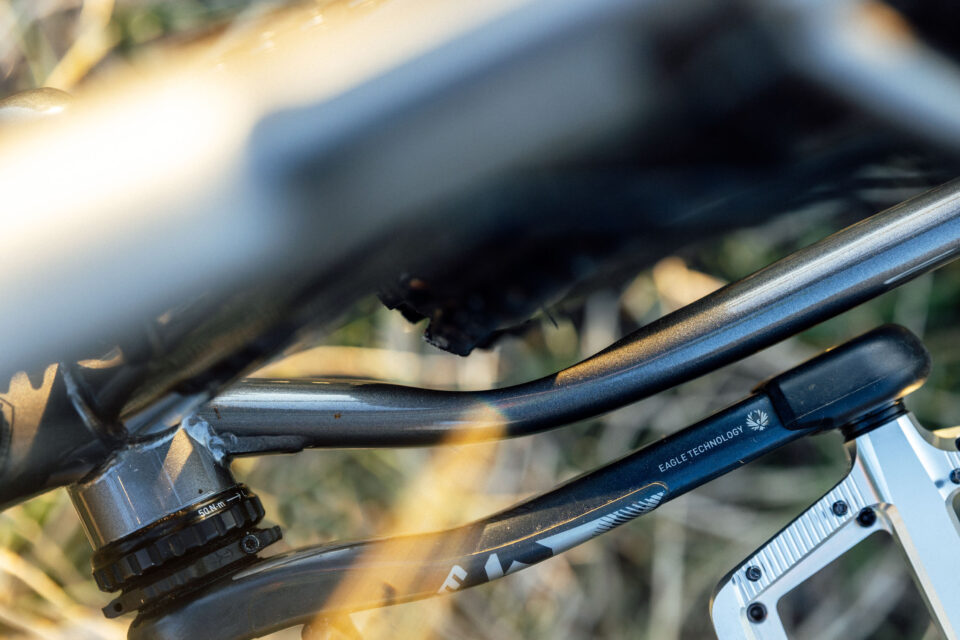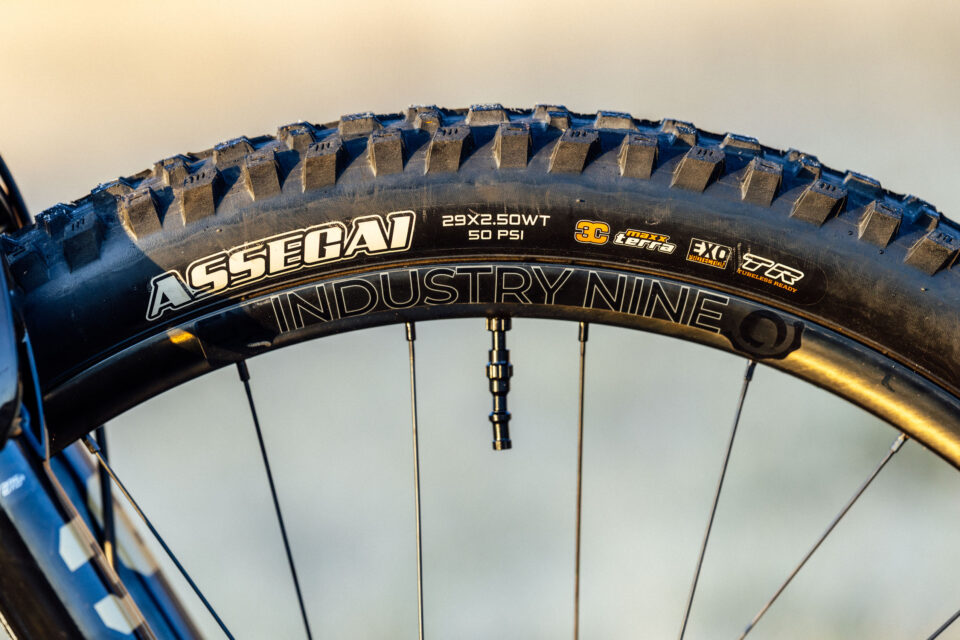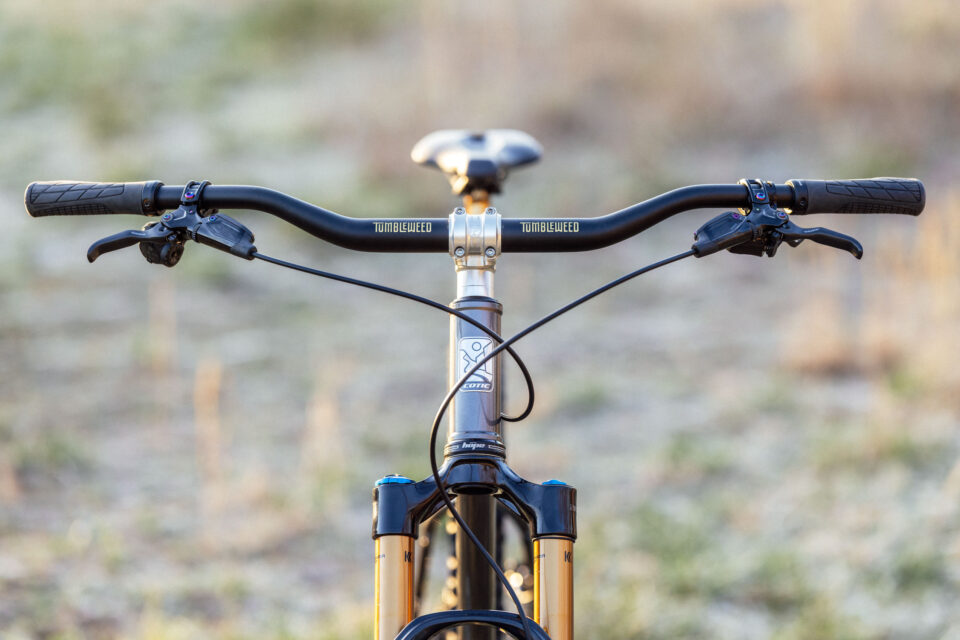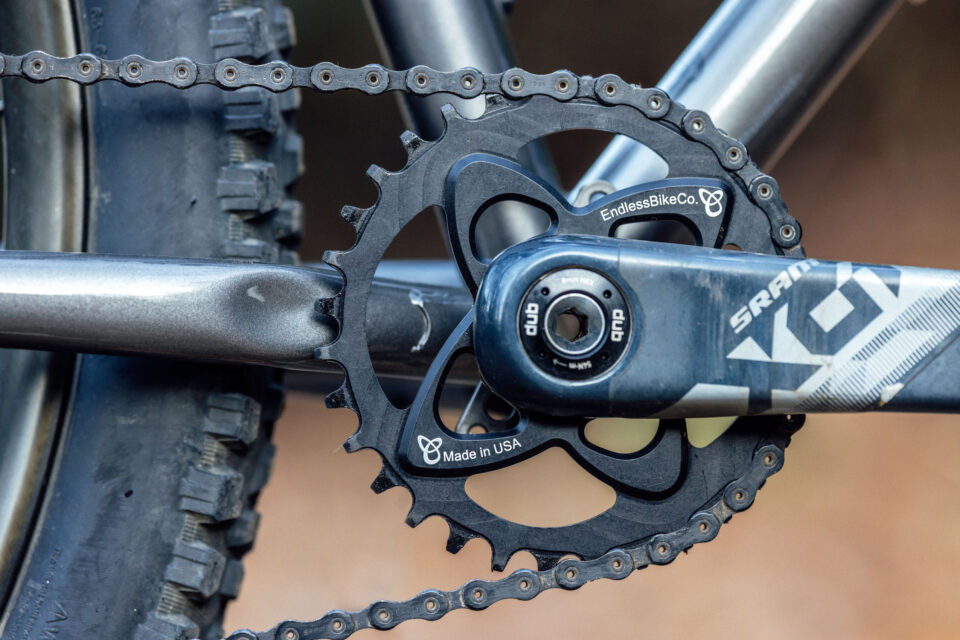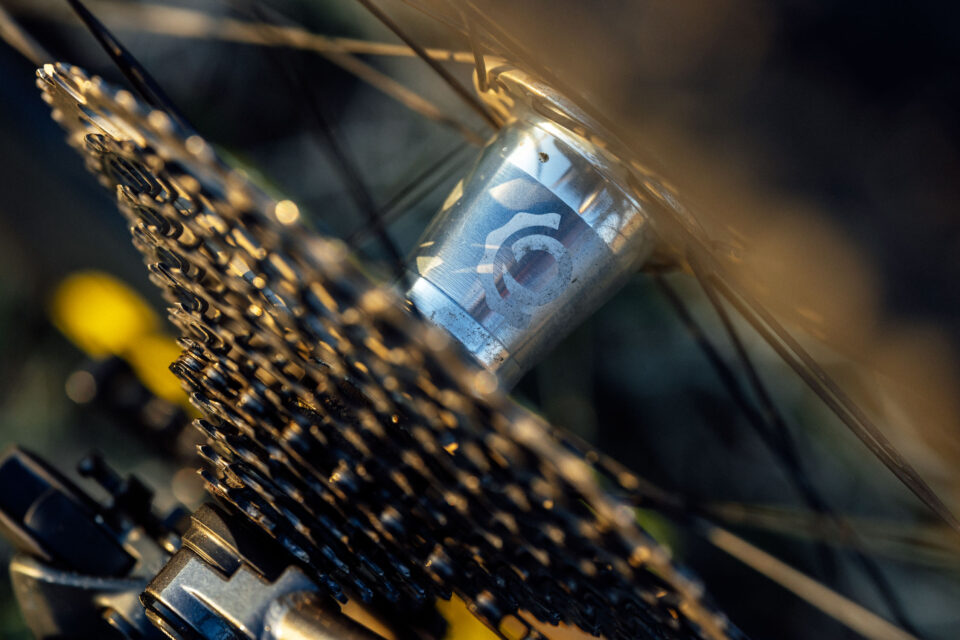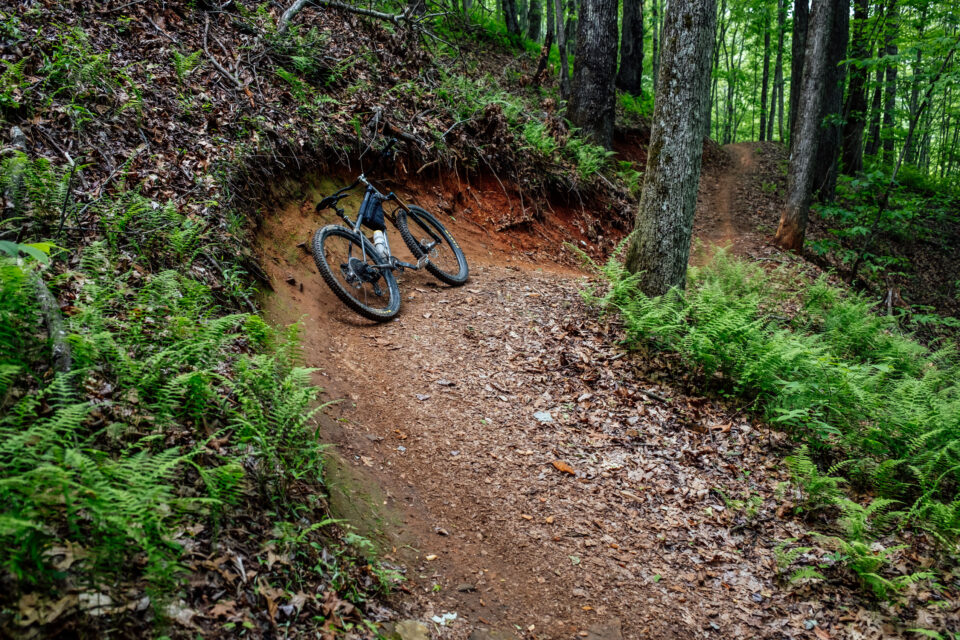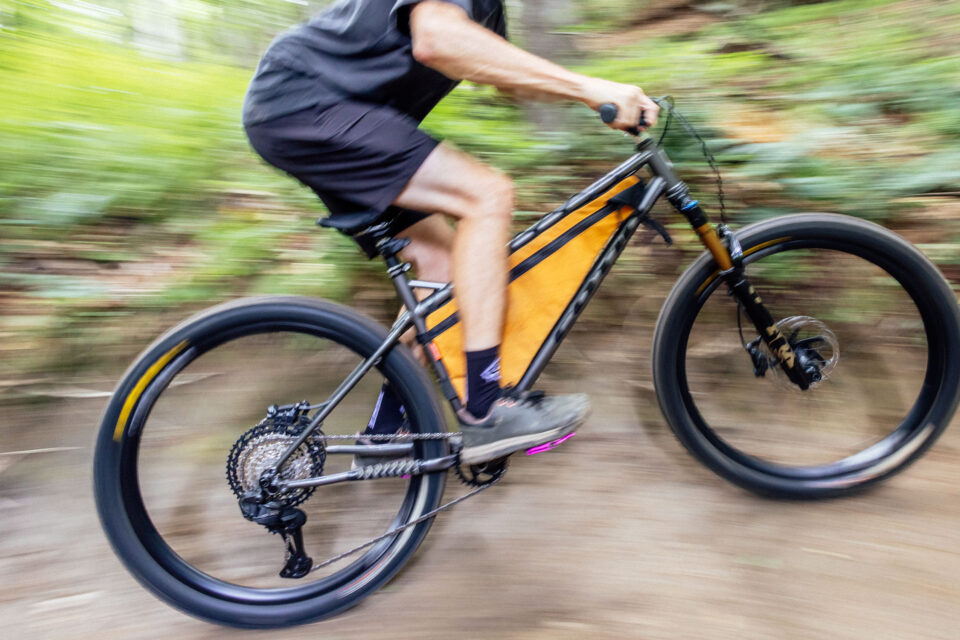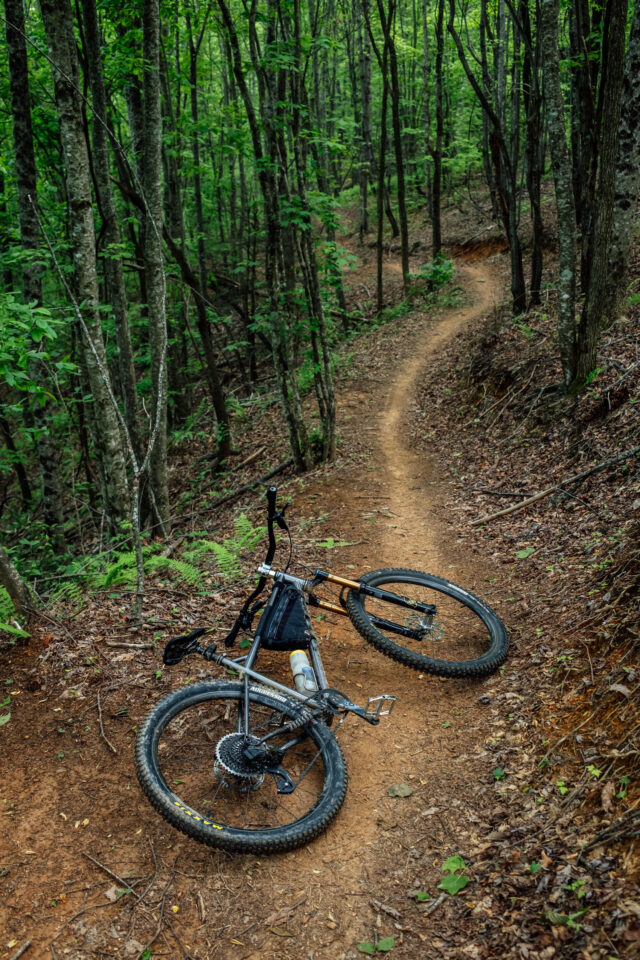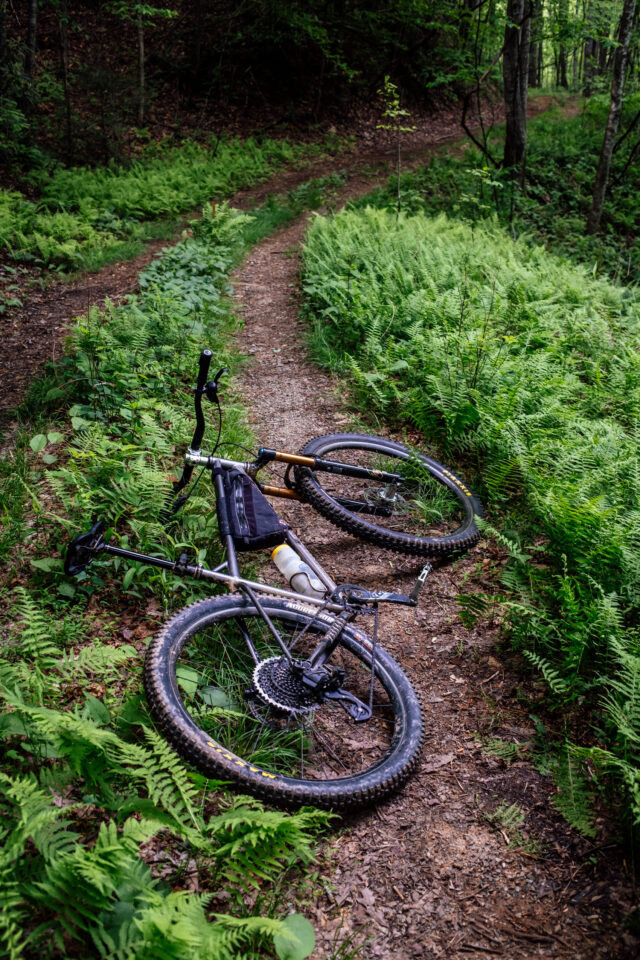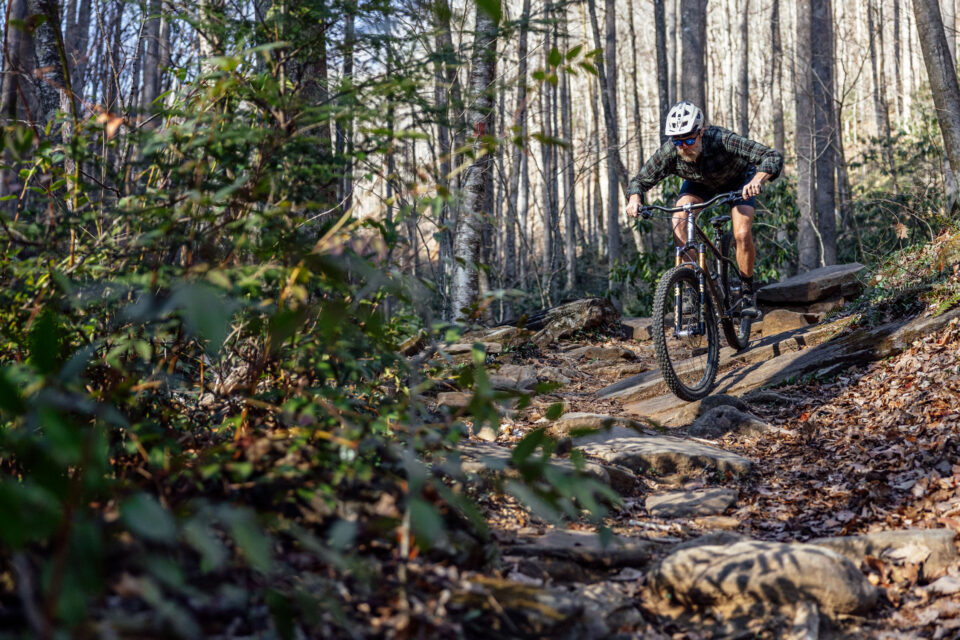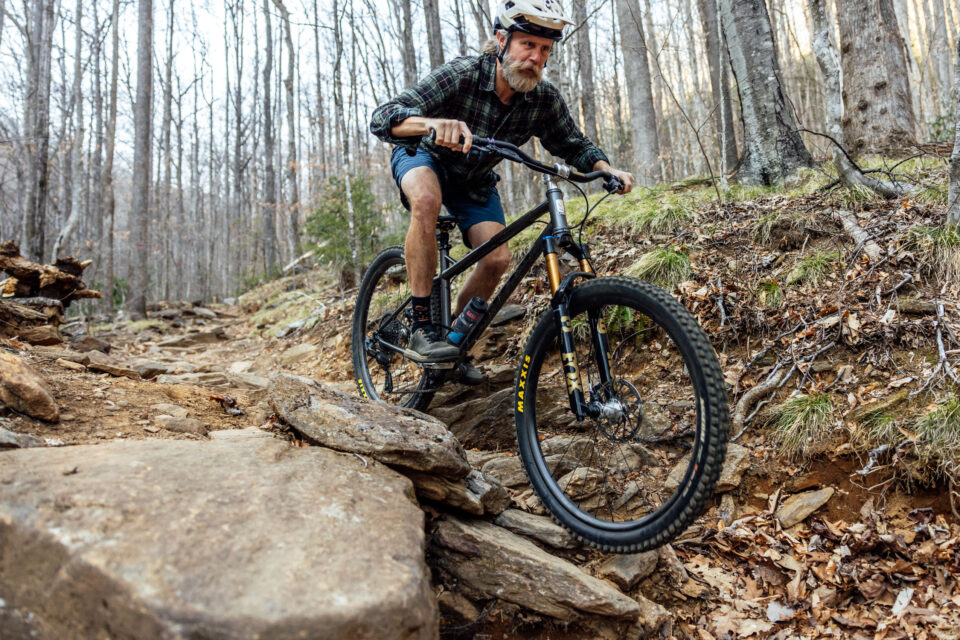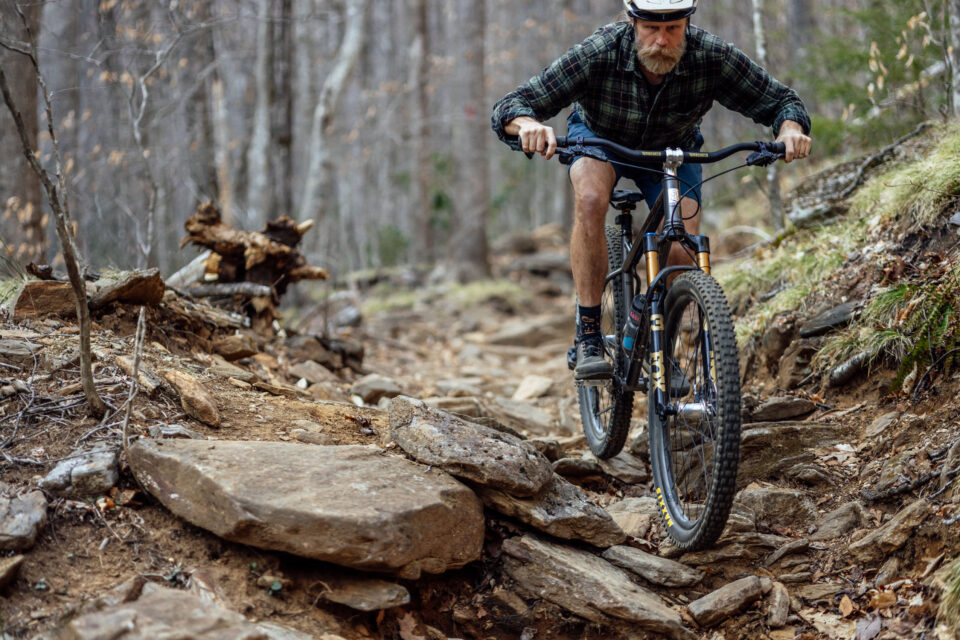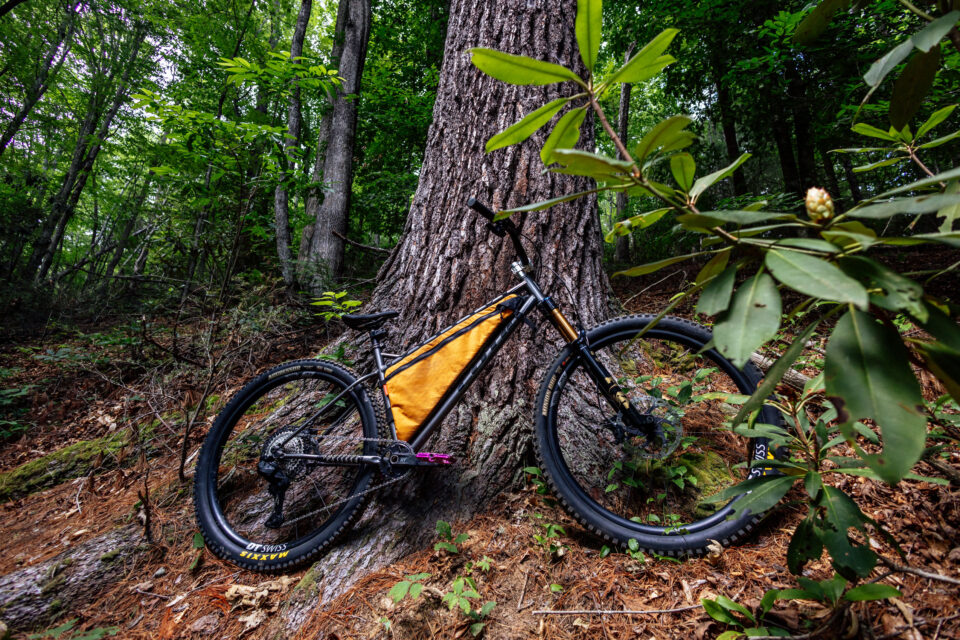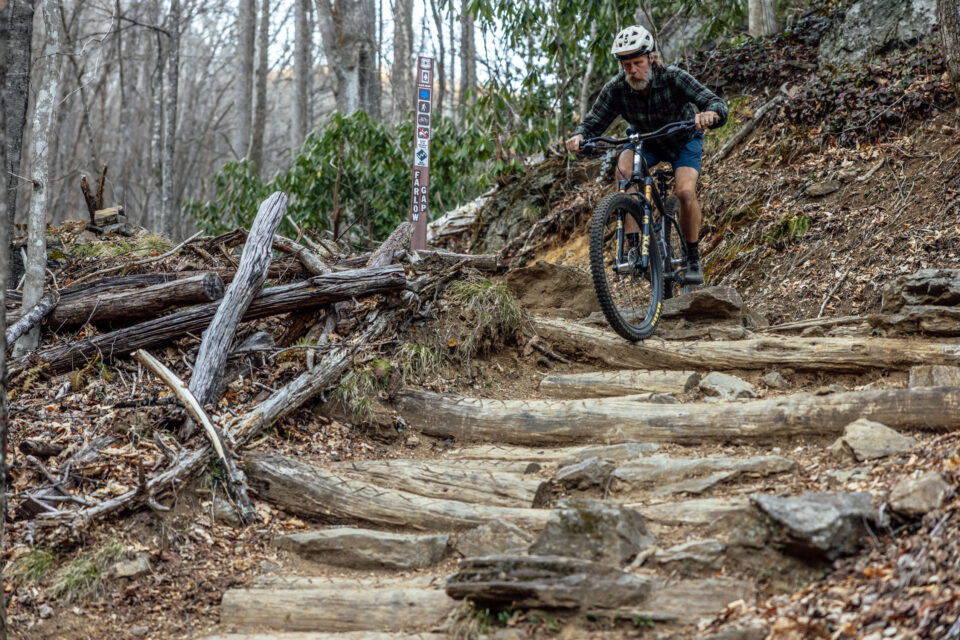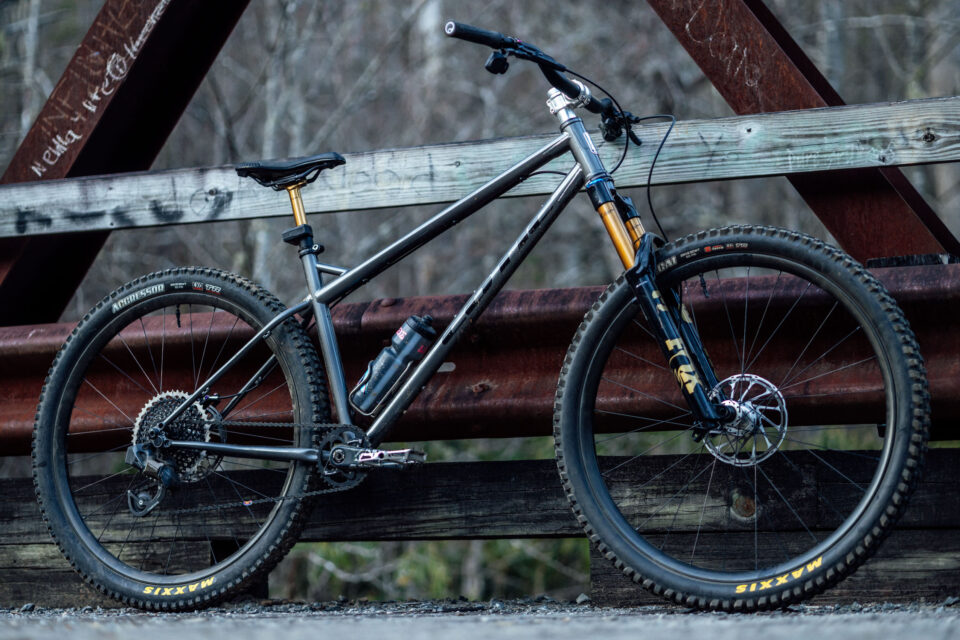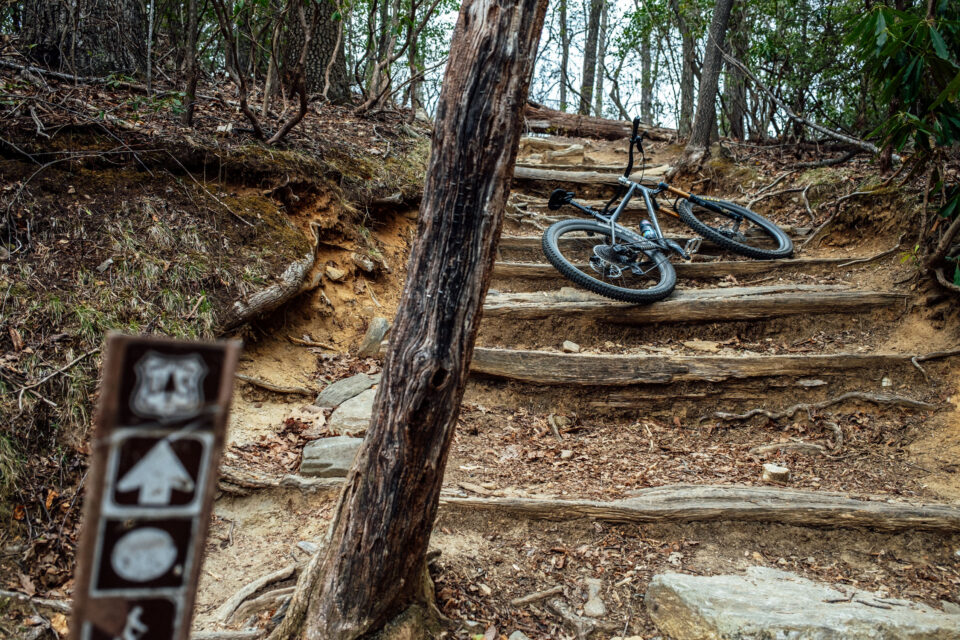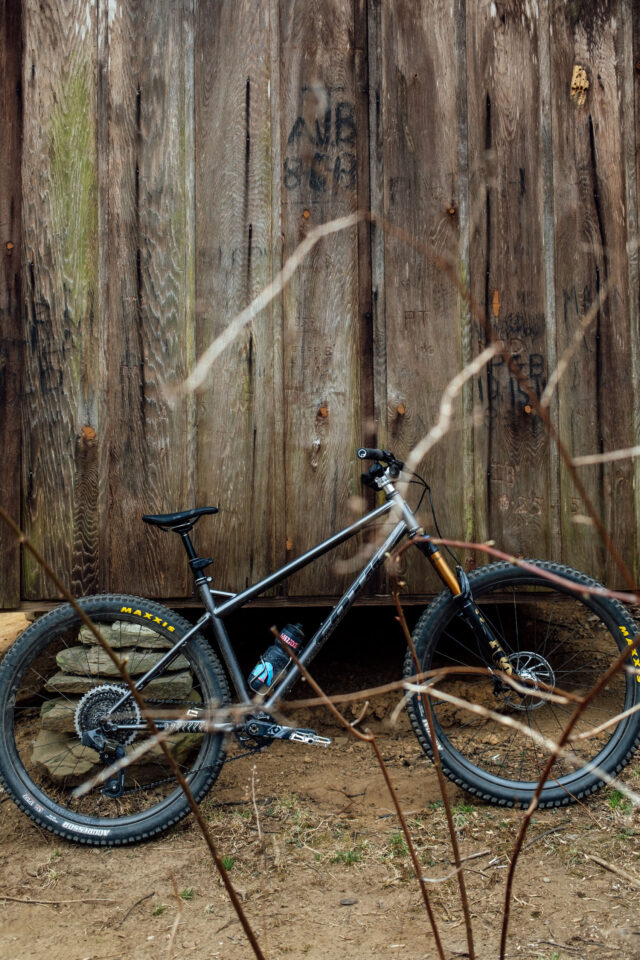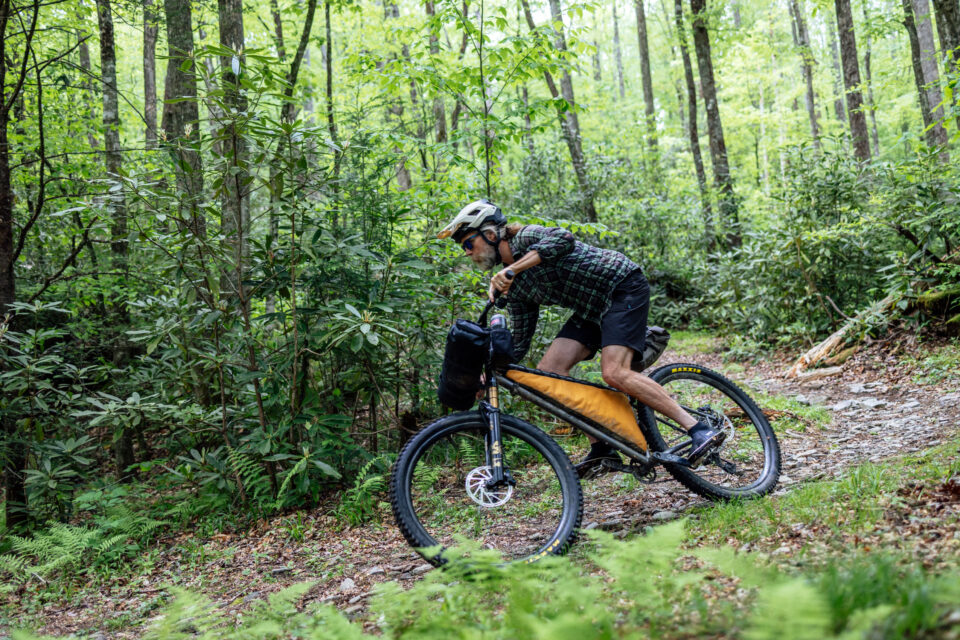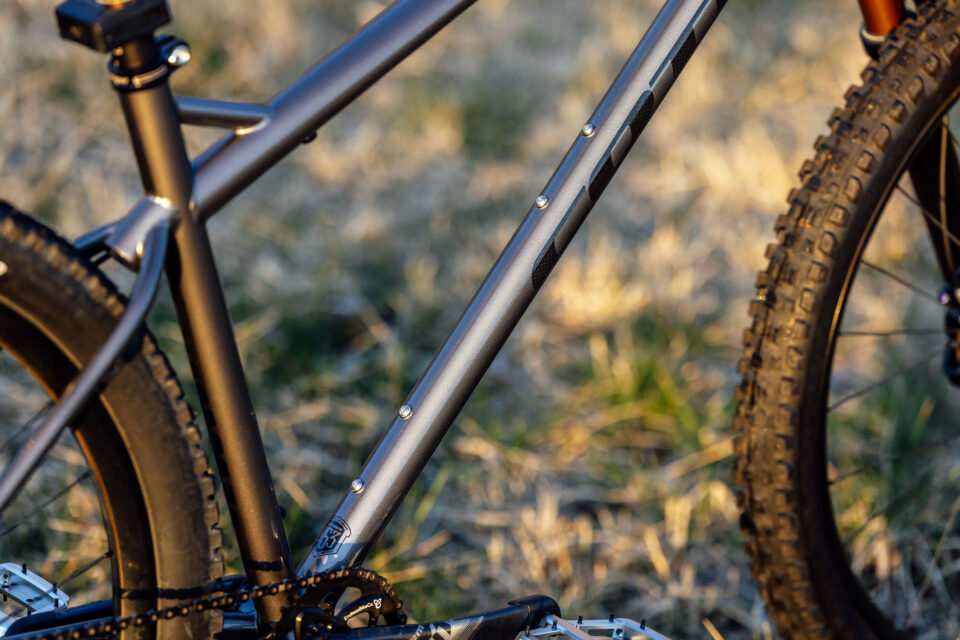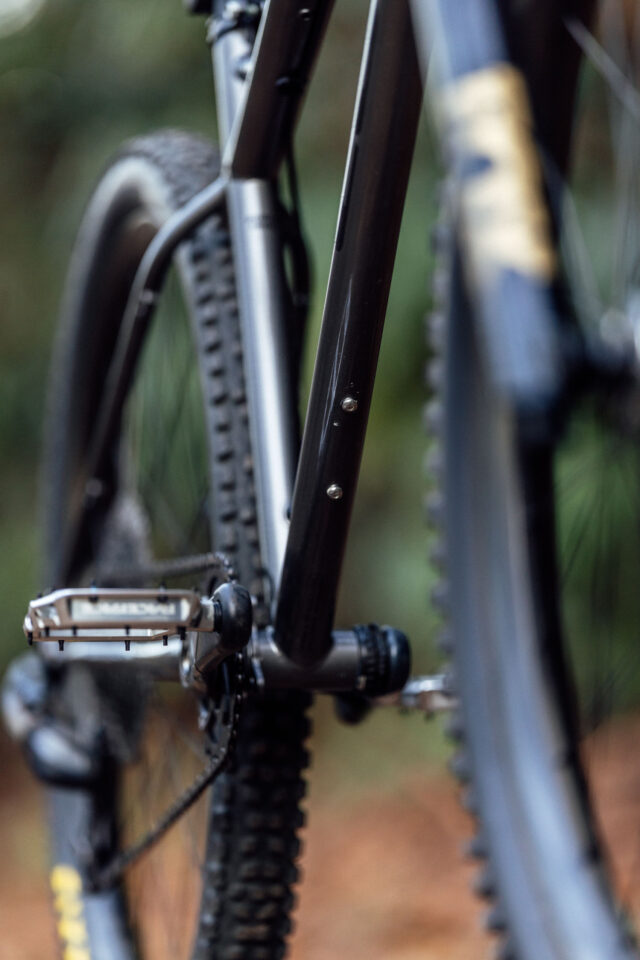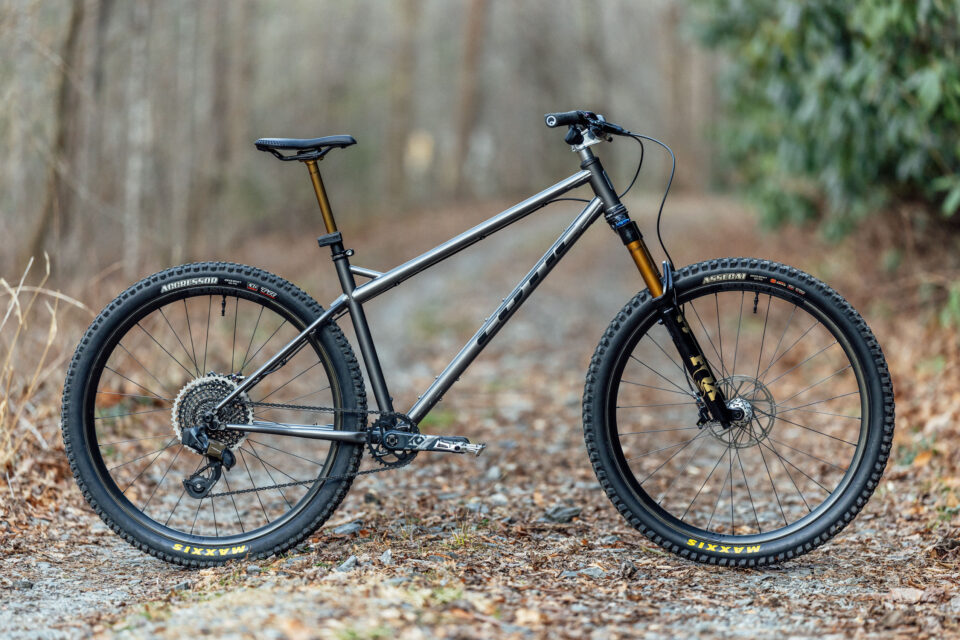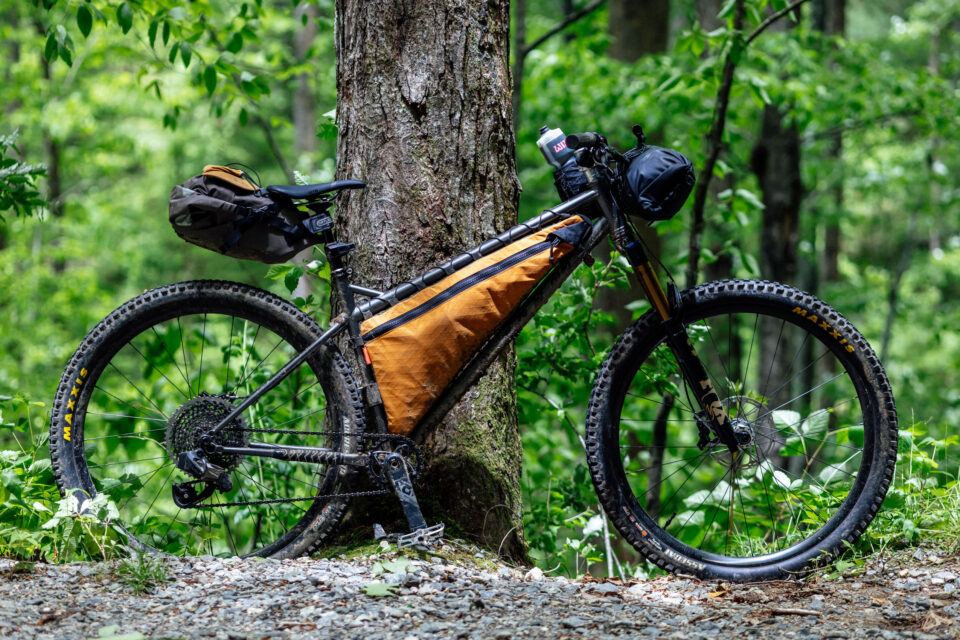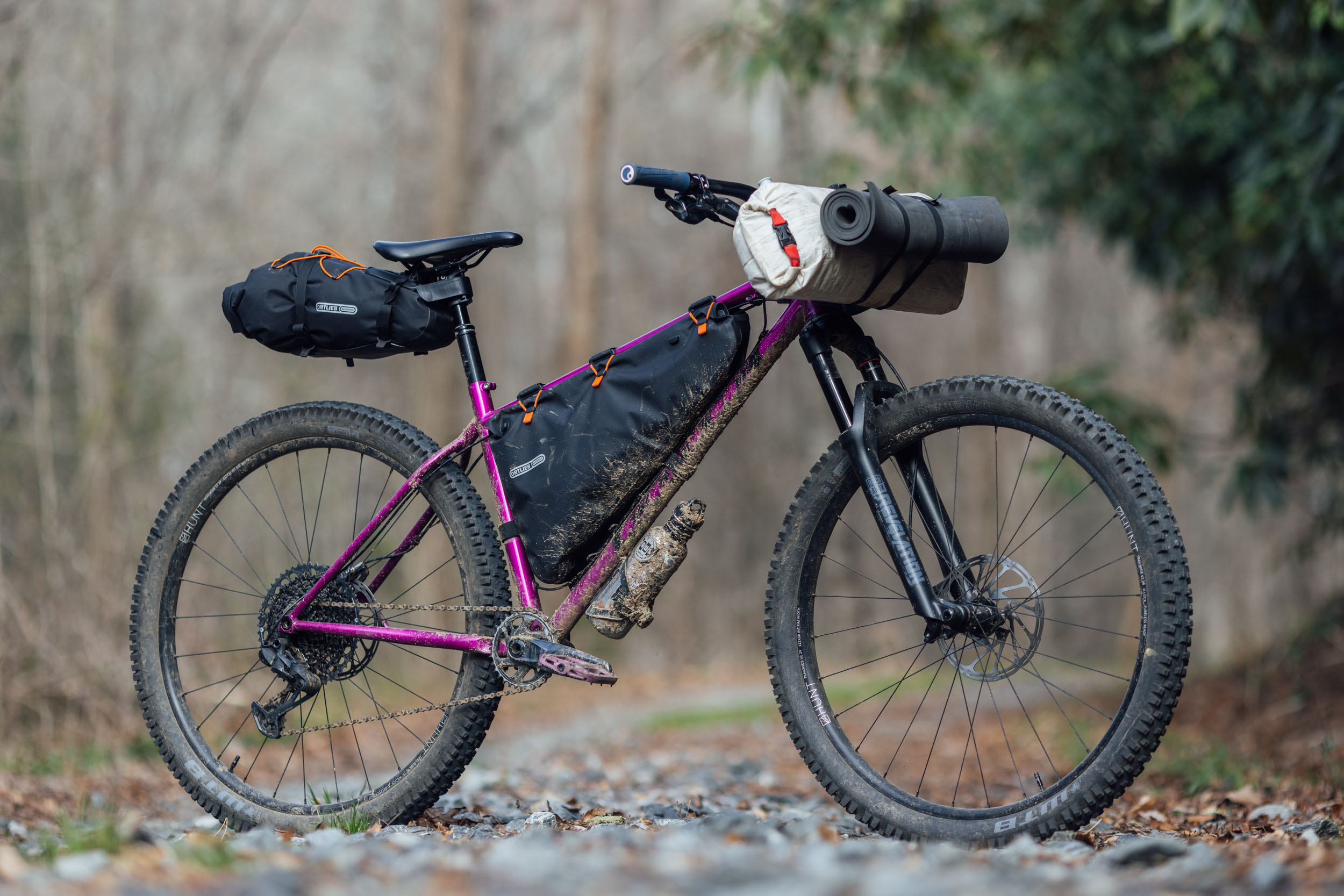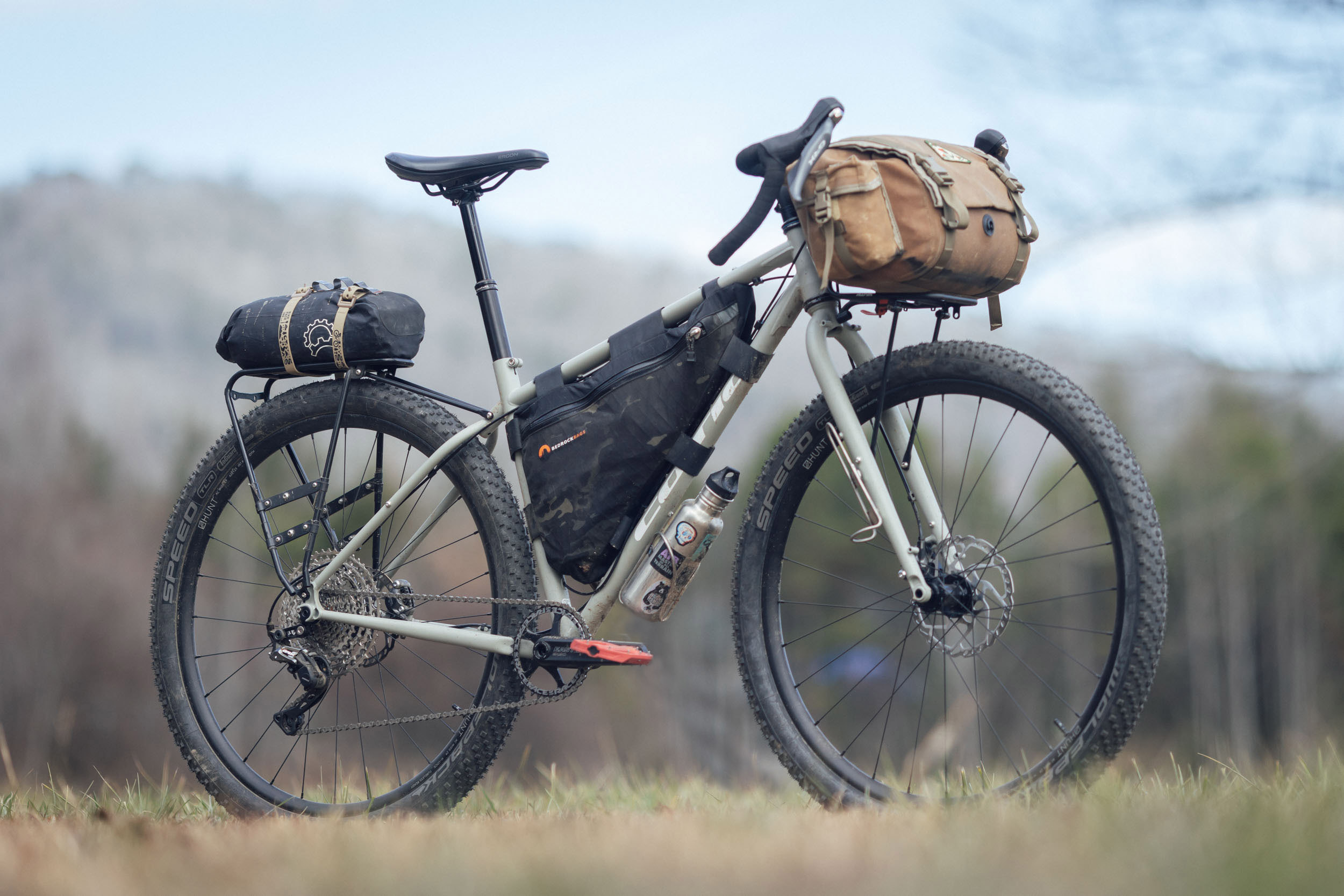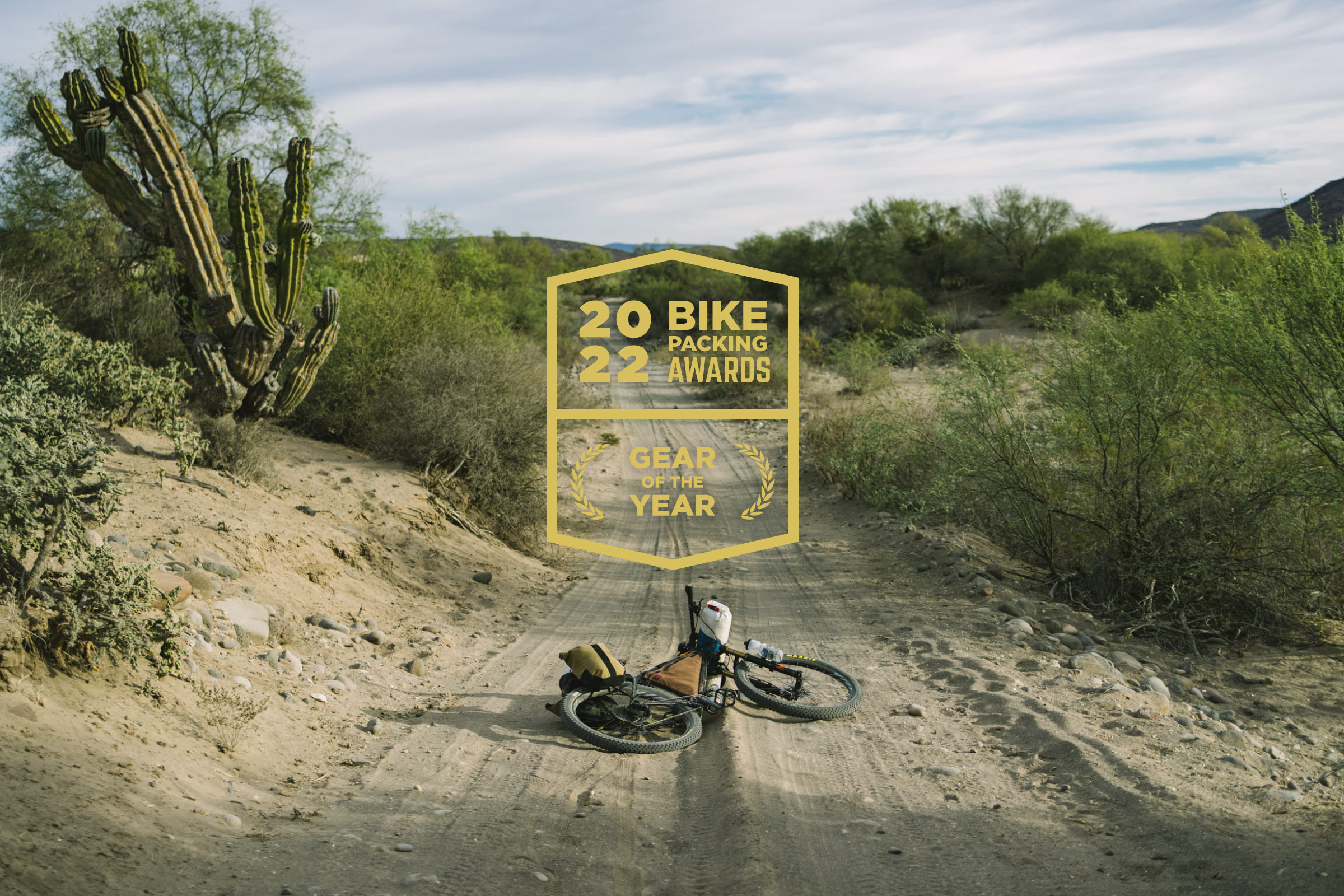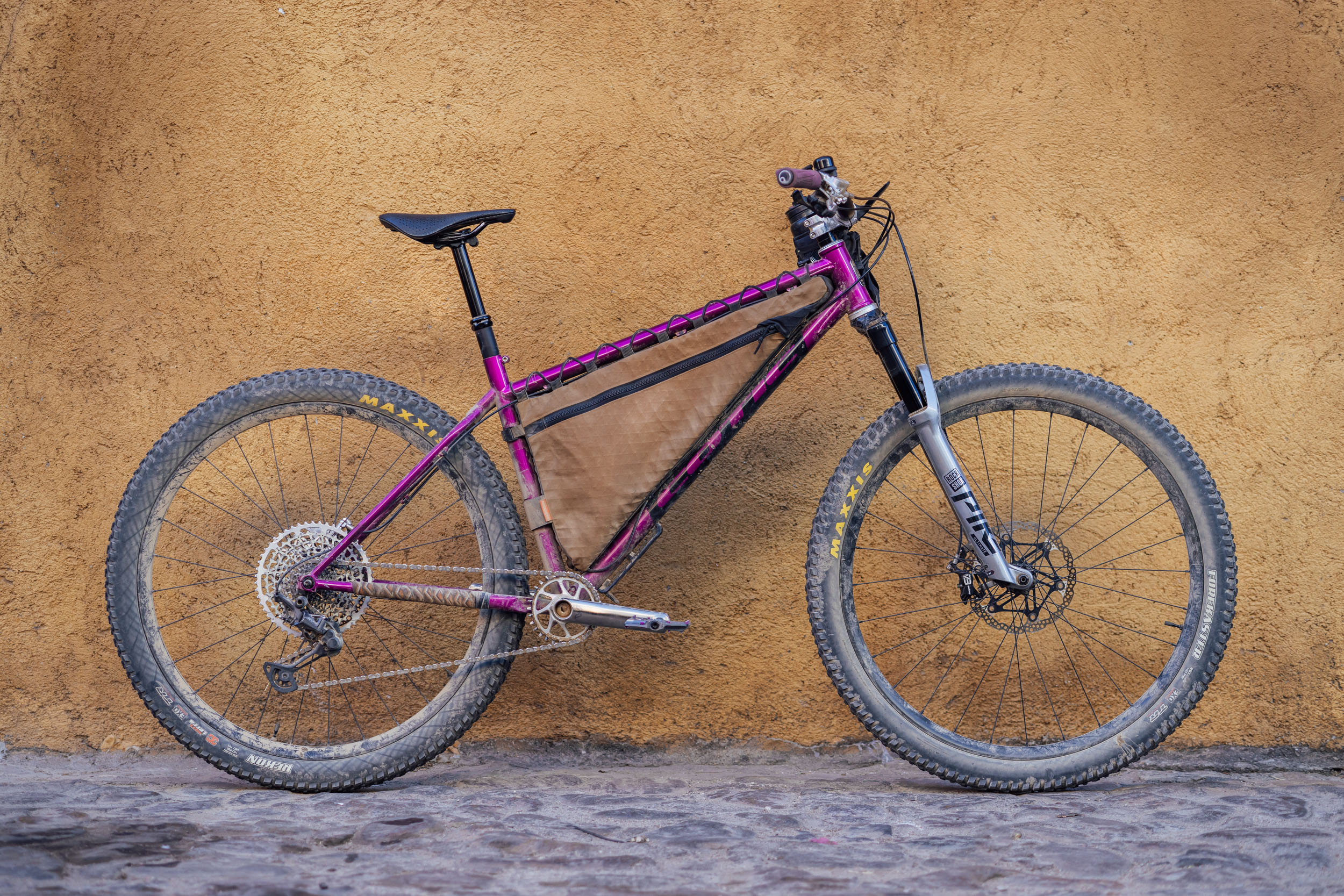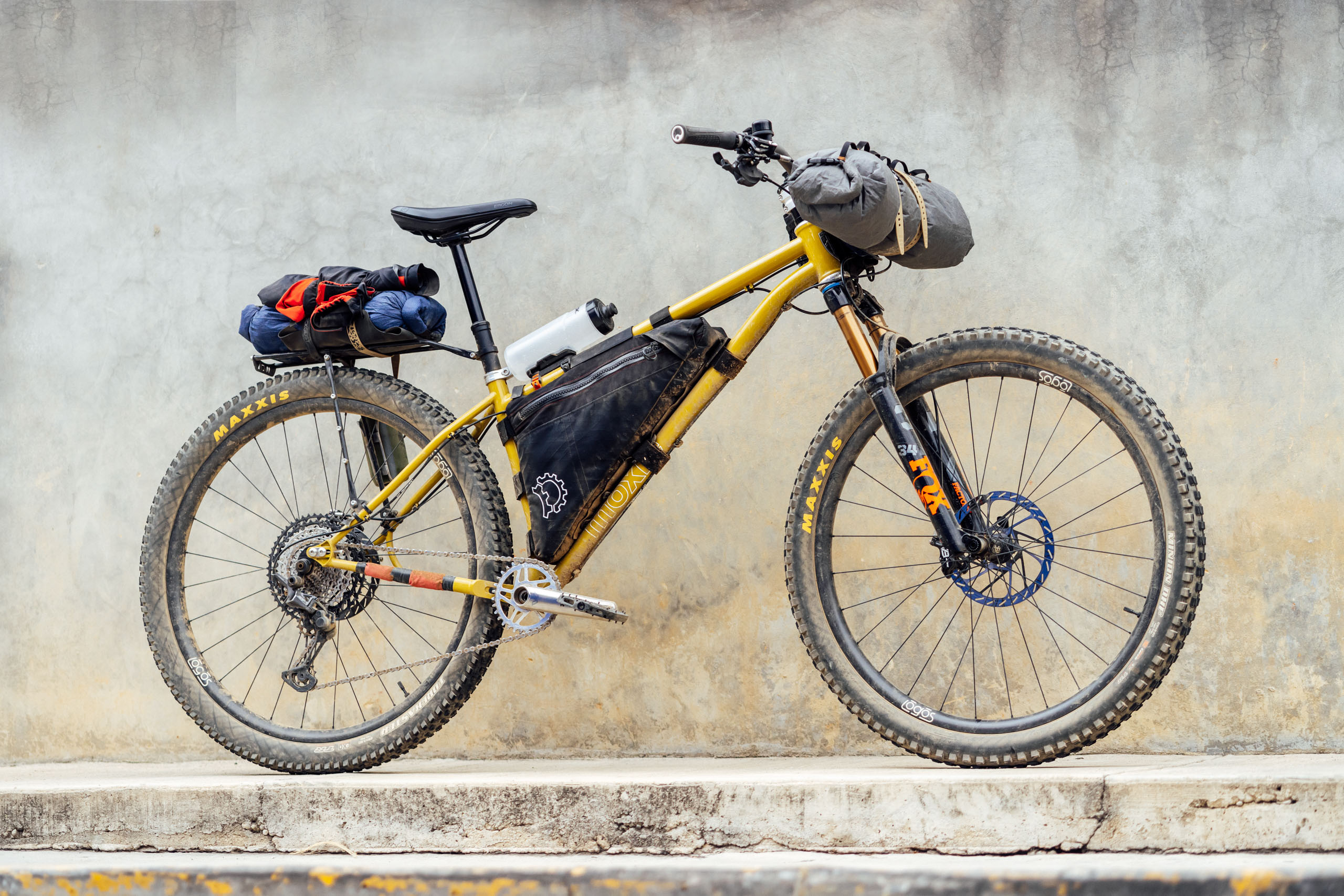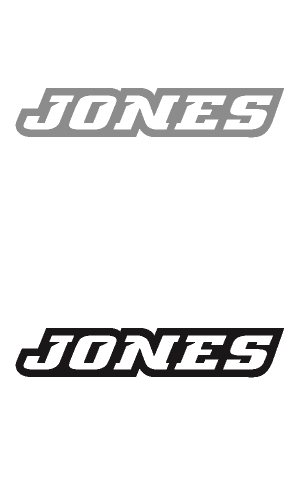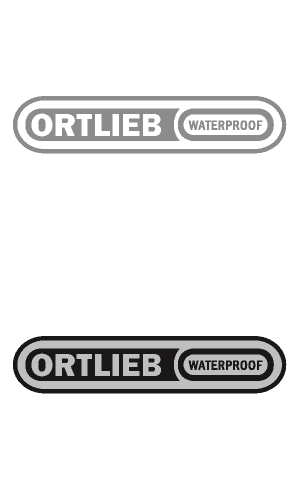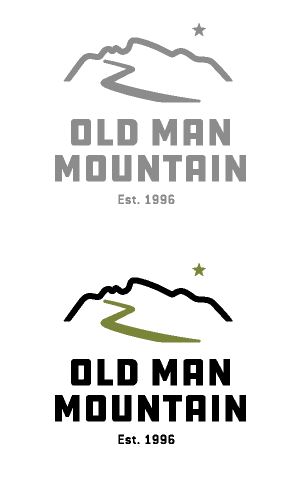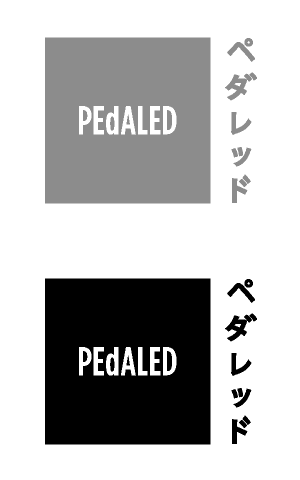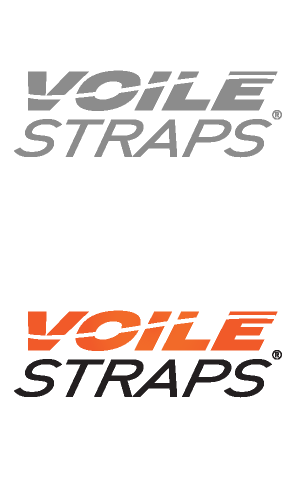Cotic BFe Review: Burly Metal, Soft Touch
After a two-decade evolution, the latest Cotic BFe proves it was worth the wait and might be one of the most balanced and capable hardtails Logan has tested—equally confident on steep descents and long backcountry climbs. Read his full review to see what makes this do-it-all trail hardtail set a new bar…
PUBLISHED Jul 16, 2025
Despite the fact that they don’t make ‘em like they used to, I’ve found that sometimes good things come to those who wait with bicycle frames. That latter adage is conceptually the opposite of use what you already have, another bikepacking-applicable platitude I’m fond of, but I digress. A few of my all-time favorite bikes are those I held out on until the third, fourth, or fifth generation model to pick up—after a set of refinements or a particular tweak brought it to near perfection. As evidenced in plenty of comments on the site where folks are “glad I waited for this version,” or vice versa, “Damn, I just bought last year’s model, and now they decided to improve the [insert tire clearance, dropouts, head tube angle, or some other significant update here],” improvement happens over the long term via feedback and hard use. It’s not always improvement for the sake of feeding the bottom line, as skeptics might suggest. I’ve had my eye on the Cotic BFe for six or seven years now, but I waited until the current model to give it a whirl. I’m glad I did. Read on to find out more.

There are only a handful of hardtails still in production that have truly shaped the modern mountain bike scene; the Cotic BFe is undoubtedly one of them. Believe it or not, the BFe has been in Cotic’s lineup for two decades. It was originally introduced in 2005 as the brand’s second model, designed to be a harder-hitting version of their flagship Soul hardtail. The original BFe boasted a full Reynolds 853 steel frame and a geometry designed to accommodate 120 to 160mm forks, and it became an instant classic for more aggressive riders, particularly in the UK.
After that, the BFe lineage took a few different turns and transitioned through multiple generations, adapting to safety standards, wheel size trends, and geometry updates. In 2012, as the industry was catching the 27.5” tire size wave, the BFe was rereleased as a 26er under the campaign 26 Ain’t Dead. In 2015, Cotic stopped making the 26″ version and introduced the Gen4 BFe with 27.5″ wheels called the BFe275. The 2017 Gen5 version introduced Cotic’s Longshot geometry, still with 27.5″ tires. Then, in 2018, Cotic reversed course and reintroduced the BFe26 as a separate model, positioning it as a 26” tire holdout with the #26aintdead hashtag. It had all the makings of a then-modern hardcore hardtail but with the throwback tire size. It wasn’t until 2020 when Cotic embraced the inevitable move to 29” tires and unveiled the BFeMax, which is when I became interested. In fact, before testing the SolarisMax in 2020, I had reached out to Cotic about the BFeMAX. For whatever reason, I decided to put the BFe on hold.
I finally committed when the all-new 2025 Cotic BFe was announced last October. The Gen7 version blends both the BFe275 and BFeMAX to effectively make a bike that can be either. Its “Double Decker Dropout” allows it to be set up as either a full 29er or as a dedicated “mullet” with a 27.5″ rear wheel, without altering the geometry. That really wasn’t what convinced me to try it, however. I’m not interested in a mullet configuration.
The new BFe kept all that was good about the BFeMax that first piqued my interest: It has clearance for 29 x 2.6″ tires, Longshot geometry, excellent tubing specs, and the perfect 130 to 160mm fork length range, allowing it to be tweaked to fit riding preferences between the trail and enduro categories. It also received some excellent upgrades that tipped the scales, including a -0.3-degree slacker head tube angle and a significantly longer top tube (effectively creating a wonderfully long front-center), a lower 67mm bottom bracket, and a lengthier head tube. I’ll talk more about geometry shortly.
Another change, as is pretty standard with all new releases these days, is that Cotic outfitted it with a UDH dropout. That being said, the BFe isn’t Transmission compatible; the switchable axle configuration means that it doesn’t provide the amount of clampable flat space necessary to accommodate the direct-mount derailleur. So, the benefit of UDH in this case is that it allows you to easily find replacement hangers, as they’re becoming the new norm.
The 2025 BFe also comes in two paint schemes: Gunmetal (as shown here) and White CMYK, which glows in the dark. It’s available as a frameset for £649 or in one of several completes starting at £2549.
.
Build Kit
For this review, I opted to get a frame and build it up with parts I had on hand. It came together nicely, although as you might see in the photos, I ended up changing the stem to a short 35mm version, and I ultimately installed the new Shimano XT Di2 drivetrain and brakes on it for that review. Here’s the full build kit prior to that switch, as shown in a lot of these photos.
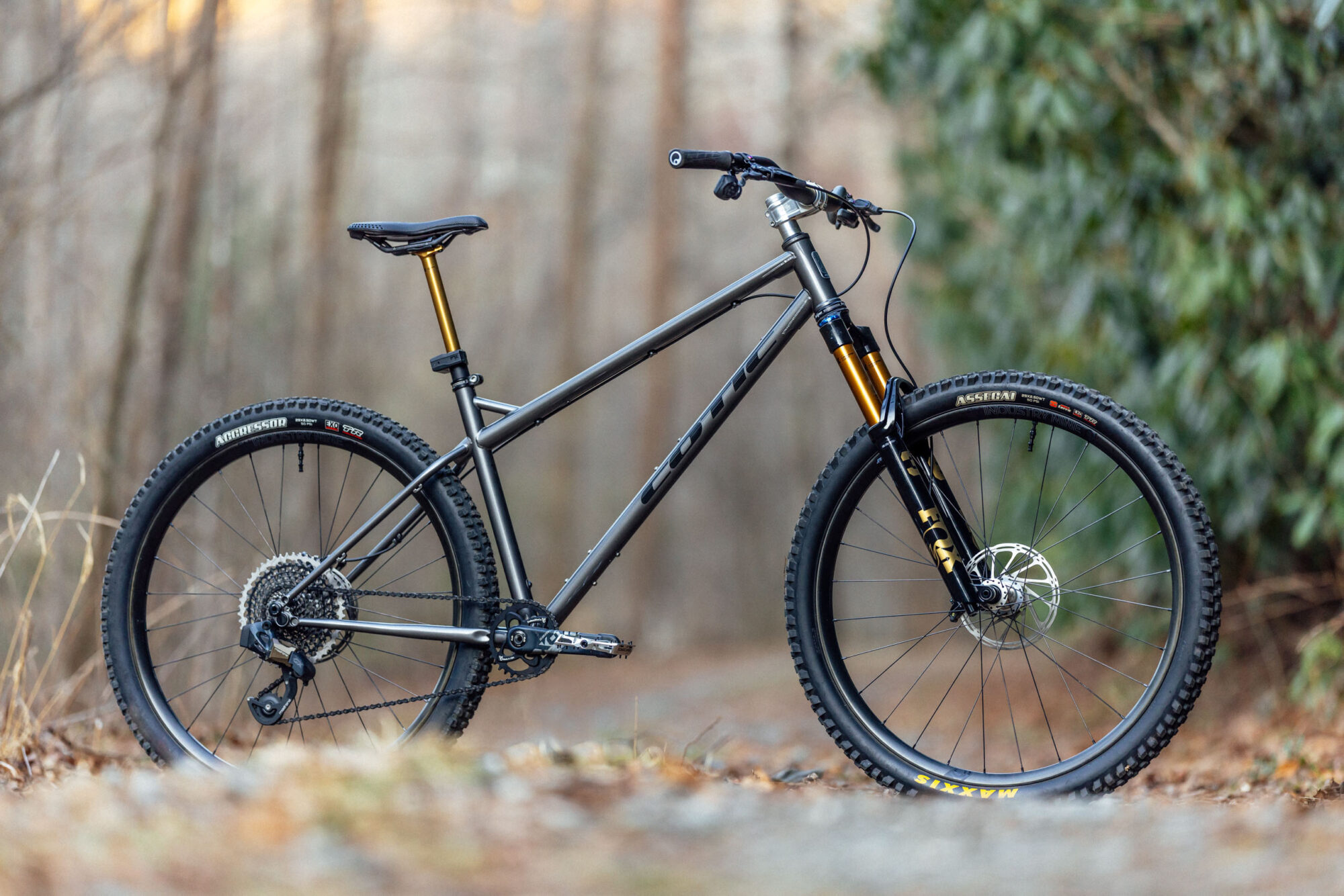
- Frame: Cotic BFe, C4, Gunmetal
- Fork: Fox 36 SL, 140mm
- Wheelset Industry Nine Hydra Enduro S Carbon, Silver
- Front Tire: Maxxis Assegai 29 x 2.5″
- Rear Tire: Maxxis Aggressor 29 x 2.5″
- Crankset: SRAM Eagle X01 Carbon
- Chainring: Endless Direct Mount, 32T
- Derailleur: SRAM GX AXS with Madrone Rebuild
- Shifter: SRAM AXS Pod
- Cassette: SRAM Eagle X01, 10-50T
- Bottom Bracket: SRAM DUB
- Handlebar: Tumbleweed Persuader 20, 820mm
- Stem: Profile Racing Helm, 32mm
- Grips: Ergon
- Headset: Hope
- Brakes: SRAM G2 Ultimate
- Saddle: Bike Yoke Sagma
- Seatpost: Rockshox Reverb AXS 200mm

Cotic BFe Tubing and Frame Feel
I imagine if you asked ChatGPT to blindly illustrate the Cotic BFe, you’d get some sort of rugged Mad-Max-esque thick beast of a bicycle-shaped object. With a name like Burly Iron (B for Burly + Fe, the chemical symbol for Iron), it’s hard not to draw such a mental picture. And having spent a ton of time on the SolarisMax, which I praised to no end for its supple and lively ride quality, I kind of expected the BFe to feel like a Panzer tank by comparison. Spoiler alert: I stand wildly corrected. Yes, the BFe is made of slightly larger and thicker tubing, but judging purely by how forgiving, snappy, and springy the BFe feels on the trail, it’s clear that Cotic did an incredible job speccing this tubeset. The lovely signature Cotic ride characteristics shine through in the BFe despite the frame’s 200-gram (0.44-pound) weight differential.
The BFe tubeset actually shares a few structural similarities with the SolarisMax I reviewed. They’re both built around a Reynolds 853 downtube, with the remainder of the tubes largely made from Cotic’s “FM” tubing, a heat-treated chromoly that they claim has a roughly 15% lower material strength than 853 but is 30% stronger than regular non-heat-treated cromo. As Cotic’s founder and designer Cy Turner explained, they can still use it in relatively thin profiles to maintain ride feel. Compared to the SolarisMAX, the 853 downtube has the same material thickness but has a slightly larger diameter. The BFe’s top tube is 16% thicker-walled and 10% larger, but it still uses their Ovalform shaping, which Cy explained is a big factor in the ride feel of their bikes. The seat tube is a similar size to the one on the SolarisMAX, but again, it has a slightly thicker wall to account for the BFe’s intended purpose. It’s worth noting that the new Solaris moved to a slightly shorter fork length and is designed for more of an XC/bikepacking sensibility. As a result, it has a revised tubeset with slightly thinner wall thicknesses than its predecessor, the SolarisMAX.
Taming the Beast
Changes to the BFe geometry from the BFeMAX include a lower BB (-10mm), steeper seat angle (+0.5 deg), and C-sizing that brings more incremental and consistent sizing steps—five sizes instead of four across the same overall range. In the grand scheme of things, the BFe is similar in nature to other bikes I’ve tried recently, such as the Pipedream Moxie and the Bird Forge. However, it’s probably the closest to what I’d consider a perfect steel hardtail in terms of lengths and measurements. Although my ideal numbers tend to fluctuate, if I were to get a custom hardtail designed tomorrow, it would have numbers very similar to the C4 (large-er) BFe below: a ~490mm reach, ~670mm top tube, ~65° head tube and 75° seat tube with sag, a tall 130mm head tube, long 445mm chainstay length, and a straight seat tube to accommodate a 240mm dropper. I think there are only two things I’d really tweak: nixing the seat tube bridge and replacing the stacked dropout with a slider that would result in a ~435-450mm chainstay. This bike excels as a 29er, and it would make a killer trail-slaying singlespeed.
| Bike | BFe | Chameleon | SolarisMax | Forge | Trans AM | Moxie |
|---|---|---|---|---|---|---|
| REACH | 491 | 465 | 481 | 496 | 485 | 510 |
| STACK | 655 | 638 | 629 | 672 | 646 | 642 |
| EFFECTIVE TT LENGTH | 671 | 643 | 651 | 655 | 640 | 650 |
| HEAD TUBE ANGLE | 64.7° | 65° | 65.7° | 65.8° | 64° | 64° (64.7) |
| SEAT TUBE ANGLE | 74.7° | 74.4° | 75° | 76.8° | 76.5° | 77.5° (76.6) |
| SEAT TUBE LENGTH | 471 | 430 | 460 | 445 | 430 | 420 |
| HEAD TUBE LENGTH | 130 | 120 | 120 | 120 | 110 | 105 |
| CHAINSTAY LENGTH | 445 | 425-437 | 444 | 435 | 425-437 | 425-441 |
| WHEELBASE | 1256 | 1208 | 1229 | 1242 | 1246-1258 | 1264-1280 |
| BOTTOM BRACKET DROP | 67 | 56 | 60 | 87 | 50 | 64 |
One of the most interesting aspects of the BFe—at least on paper—is its seat tube angle. Unlike many modern hardtails that lean into ultra-steep seat tube geometry, the BFe sticks with a more conservative 75° angle (with a 140mm fork), which is notably slacker than the 76.5°+ angles found on bikes like the Transition TransAm, Forge, and Moxie. When asked about this design choice, Cotic founder Cy Turner explained, “We’ve tried steep seat angles, but we don’t like them for a lot of the types of riding we do. Steep seat angles are great for scrabbling up steep climbs or powering up steep forest roads, but they really shorten the seated length of the bike and give you a bit of a feeling of being in a half push-up on more rolling terrain or steadier climbs. You can’t sit off your wrists on longer rides, and whilst the BFe is amazing for those short smash-n-grab rides, as you have found, it’s also very civilised for longer pedals.” That answer came in response to a comment expressing approval for this exact trait—namely, that the BFe isn’t just a bruiser on the descents; it still pedals well, thanks in part to that more measured seat tube angle.

Even though we have pretty big hills here in Pisgah, some of which are punchy, the majority of our climbs aren’t super steep on average. Unless you’re riding some of our singletrack “backwards,” which is also fun sometimes, most of them are non-technical doubletrack and gravel that’s long and reasonably graded. I’ve found that a not-too-steep seat tube with a long chainstay places the rider in a comfortable position that also makes more sense for bikepacking and long rides. Just the other day, as I was pedaling the long (and actually pretty steep) climb up to Farlow Gap, I realized that the BFe had kind of disappeared beneath me as I was drifting into those bizarre thought patterns that often happen when spinning along in a meditative state. In this case, I was imagining how early humans must have felt when they had to worry about sabertooth tigers while out picking wild berries.
Part of the BFe’s balance and stability comes from its long front-center and long chainstays. It has an 11mm longer top tube than its predecessor, which is one of the characteristics I love most about this bike. In my opinion, many hardtails are too short, and a 490mm reach makes the C4 sizing almost fall between a large and XL. I’m 6 feet tall (1.83 meters), and have a 75” wingspan (1.91 meters), or +3” ape index, and a 34.5” inseam (0.88 meters). The C4 Cotic BFe fits me better than any hardtail I’ve tried to date.
| Frame Size | C1 | C2 | C3 | C4 | C5 |
|---|---|---|---|---|---|
| Seat Tube (centre-top) | 390 | 417 | 444 | 471 | 495 |
| Top Tube Length (effective) | 606 | 628 | 649 | 671 | 692 |
| Head Angle | 64.7° | 64.7° | 64.7° | 64.7° | 64.7° | Seat Angle | 74.7° | 74.7° | 74.7° | 74.7° | 74.7° |
| Chainstay Length (29″ rear) | 445 | 445 | 445 | 445 | 445 |
| Chainstay Length (27.5″ rear) | 431 | 431 | 431 | 431 | 431 |
| BB Drop* | 67 | 67 | 67 | 67 | 67 |
| Head Tube Length | 100 | 110 | 120 | 130 | 140 |
| Reach | 432 | 453 | 472 | 491 | 510 |
| Stack | 628 | 637 | 646 | 655 | 664 |
| Wheelbase (29″ rear) | 1187 | 1210 | 1233 | 1256 | 1279 |
| Wheelbase (27.5″ rear) | 1177 | 1200 | 1223 | 1246 | 1267 |
| Usual Height Range | 162-172cm | 170-178cm | 176-184cm | 182-190cm | 184-195cm |
| Stem Length | 25-45 | 25-45 | 25-45 | 25-45 | 25-45 |
| Maximum Seatpost Insertion | 256 | 283 | 310 | 337 | 364 |
*BB Drop measured from 29er front wheel, same for both rear wheel sizes. All measurements are based on 150mm travel fork, 561mm static length, with 35mm sag.
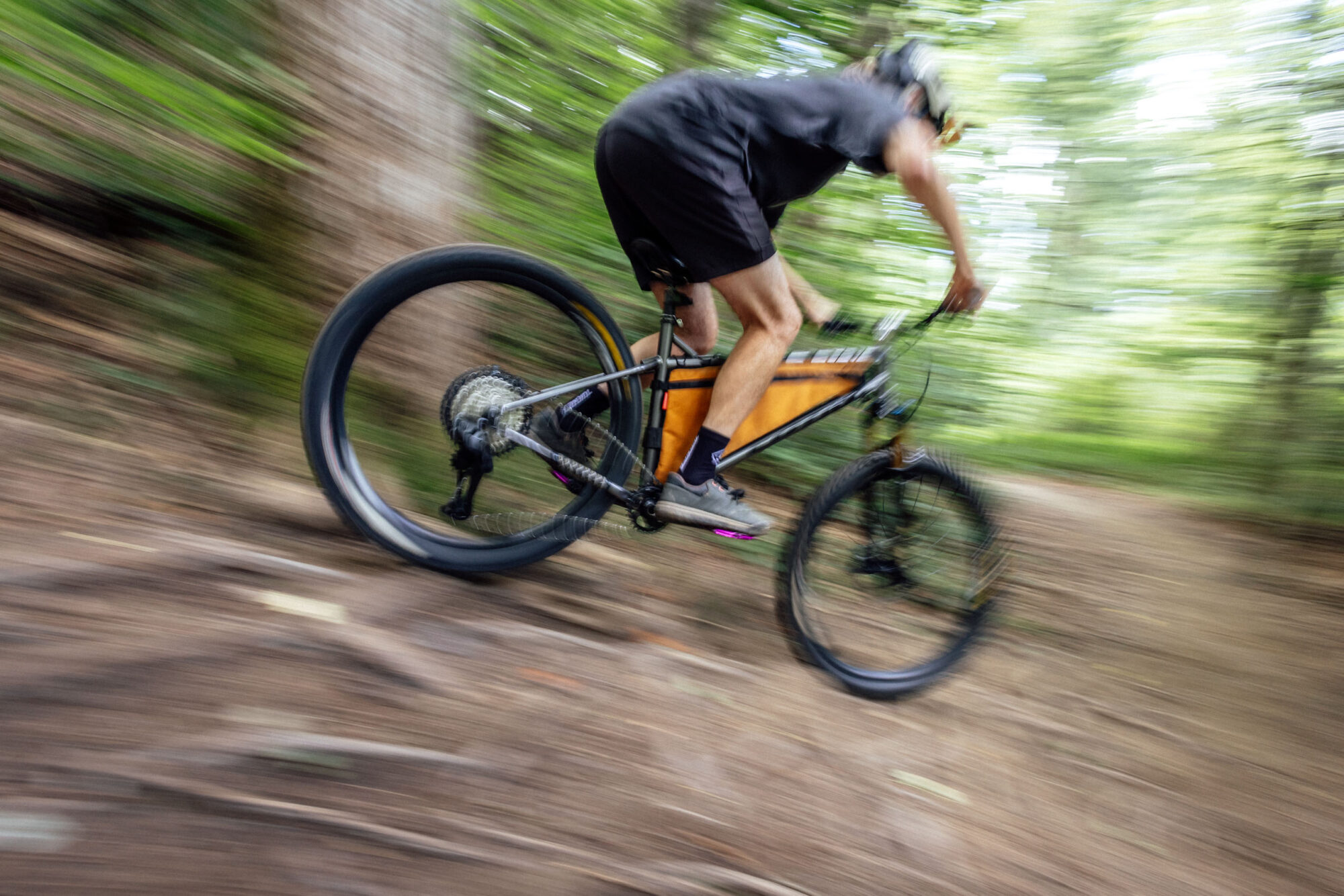
Gentle Hardcore
It’s impossible to think about the term “hardcore hardtail” without factoring in the BFe. Cotic played a significant role in shaping this niche category, and the BFe was, for better or worse, a part of the evolutionary hardtail timeline that generated such bikes and ultimately charted the direction trail-centric hardtails are going. While their early models, such as the Soul and BFe, might seem tame by today’s standards, they were ahead of their time, and Cotic continued to iterate these bikes into what the BFe is today. However, as I suggested with the seat tube angle, they didn’t push too hard. Despite its intentions as the hardcore-est hardtail in the Cotic fleet, the BFe is surprisingly gentle. As mentioned, it has a very nice frame feel that exhibits a relatively supple-but-lively, fast, and responsive feel. And when outfitted with a 140mm fork, it’s also well-balanced, climbs fluidly, and is sure-footed while doing so. Unlike some aggressive hardtails, it feels like it can be pedaled a lot longer than you’d expect from a bike of its ilk.

But what I haven’t yet mentioned is how it feels when the going gets hard. The big question for me is how confident a bike will feel when pointed down puckersome rock features and steep chutes. This is something I’ve found you can’t always judge by a geometry chart. The Bird Forge, for example, was quite capable, but you had to stay on your toes, whereas the Moxie is an all-out bruiser and feels like it could be pointed down anything. From the first ride on the BFe and throughout this test period, I was pleasantly surprised by its confidence on demanding descents. It’s very much like the Moxie in that regard, but coupled with a lighter frame, it’s also more forgiving. If I had to summarize it, I’d say the BFe is probably the most balanced “hardcore” hardtail I’ve tested to date. I truly didn’t have any real complaints in the ride department.

Any gripes I had with it were more personal, mainly in the aesthetics department. Overall, it’s a sharp bike, but if it had internal gussets at the head tube junctions—a la the Pipedream Moxie—it would have that perfectly clean look. Similarly, nixing the dimpled chainstays in favor of a forged drive side dropout would also look a little cleaner, although that might put the frame’s spotless ride feel at risk.
Out Bikepacking
The SolarisMAX—now Solaris—is clearly Cotic’s bikepacking-specific lovechild. However, I don’t think the BFe should be discounted for folks looking for a trail-centric, bikepacking-friendly hardtail. There are a few obvious upsides. It has a decent set of mounts, including three pairs of bottle bosses on the downtube (two on top and one on the underside). In my opinion, that’s plenty, although I wouldn’t be opposed to a third eyelet on the bottom. It also has a tall head tube, which provides a little more real estate for a custom frame bag. All the photos shown here are with the custom frame bag I had made for the Bird Forge, which happened to fit very well. However, it could have been a little taller at the front. There aren’t any rack mounts, but these days, there are plenty of options for mountless rear racks, such as Ortlieb’s new Quick-Rack XL and Old Man Mountain’s Divide or Elkhorn.

I suppose the only drawback concerning mounts is based on the lack of seat tube bottle mounts. I like the fact that it has a straight seat tube with nothing stopping an extra-long dropper, but that prevents using a wedge-style frame bag with the water bottle mounted vertically in the back of the triangle. That’s my favorite frame packing configuration. Perhaps Cotic will look into an external mounting bracket like that on the Neuhaus Hummingbird for Gen8.
From my experiences during a couple of bikefishing overnighters, the BFe carries the load well. It’s long, so I could see how it might get a little wiggly with a massive payload, but it handily wrangled a significantly heavy load complete with fishing rod, reel, gear, booties, food, three beers, a camp chair, and more. It’s a stiff enough frame that it would do fine with any significant mini-pannier-based setup or lighter.
- Model/Size Tested: Cotic BFe, Size C4, Gunmetal
- Actual Weight (frame): 3,021 grams (6.66 pounds)
- Place of Manufacture: Taiwan
- Price: £649
- Manufacturer’s Details: Cotic
Pros
- Superb geometry that’s progressive in the right places, making it an excellent trail bike and a very confident descender that’s not over the top in other areas, allowing it to feel great climbing and pedaling for hours on end
- Tubeset feels sublime; it perfectly toes the line between comfort and responsiveness
- Very long front-center and relatively decent stack is a great fit/feel combo
- Sharp paint and subtle graphics
- Good tire clearance and a decent set of bottle/cage mounts, although a third under the down tube would be welcome
- Thread-in cable routing under the top tube (and additional down tube bosses) provides plenty of mounting points for a full bolt-on frame bag
- 6.66 pounds for the size large frame🤘
Cons
- Dimpled chainstay and external gussets aren’t perfect, aesthetically
- Stacked dropouts are clever, but I’d prefer a slider for easy singlespeed conversion; this would be a stellar singlespeed trail bike
- In my experience with the SolarisMax, the dropper cable entry at the front of the seat tube isn’t ideal for a full frame bag or adjustments
- Lower rear rack mounts would be a welcome addition; as would a bottle bracket (a la Neuhaus) on the down tube
- Double Decker dropout is not compatible with Transmission derailleurs
Wrap Up
The general perception in the bikepacking and touring world seems to be that bikes and components peaked a decade or so ago, but I’ve often found that bike frames can still get better with time, including the adoption of more modern standards. Some truly hit their stride in later iterations. The 2025 Cotic BFe is one such example, striking a rare and impressive balance between brawn and finesse with the latest set of updates. It honors its hardcore hardtail lineage with the confidence and descending chops you’d expect, but it also tempers that aggression with a frame feel that’s unexpectedly refined. The latest BFe is responsive, comfortable, and composed. It’s built around a well-thought-out geometry that works about as well in nasty technical puzzles as it does on meandering gravel climbs. And thanks to a cleverly specced tubeset and careful incremental updates over the years, the Gen7 BFe feels like the culmination of everything that’s come before it. It’s less of a radical redesign and more of a thoughtful evolution toward a truly well-rounded mountain bike.
While it’s not without a few quirks and missed opportunities—namely, the lack of sliding dropouts and a couple of missing mounts—the BFe remains one of the most compelling steel hardtails available today, especially for those who lean toward the spicier end of the trail spectrum but still value long-ride comfort and versatility. If you’ve been holding out for a steel hardtail that threads the needle between progressive trail bike and long-ride companion, the BFe should be on your list.
Further Reading
Make sure to dig into these related articles for more info...
Please keep the conversation civil, constructive, and inclusive, or your comment will be removed.


